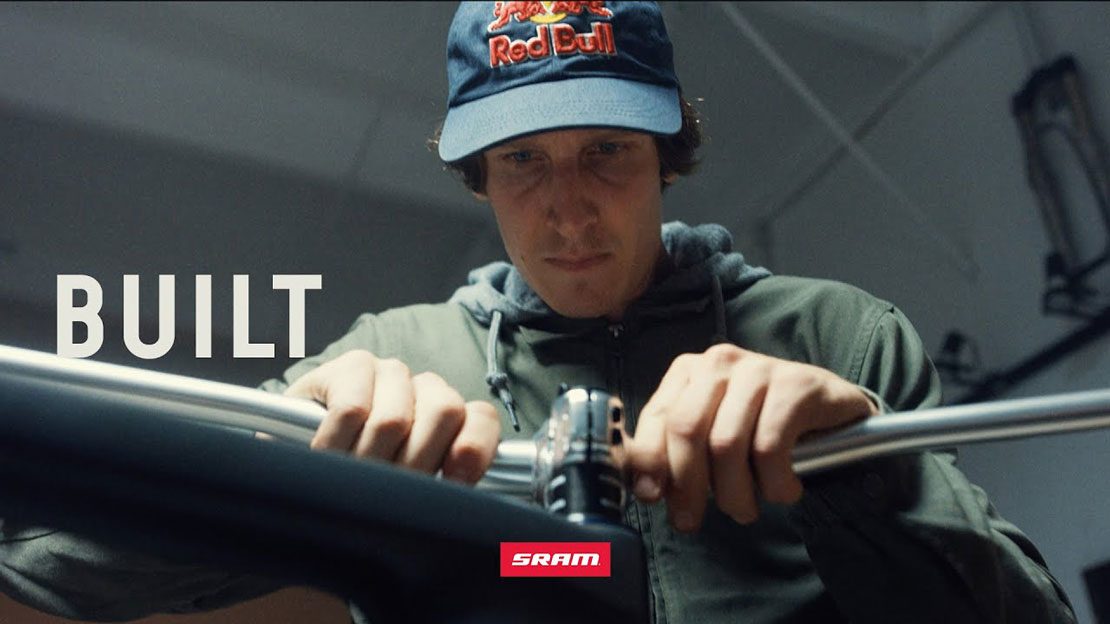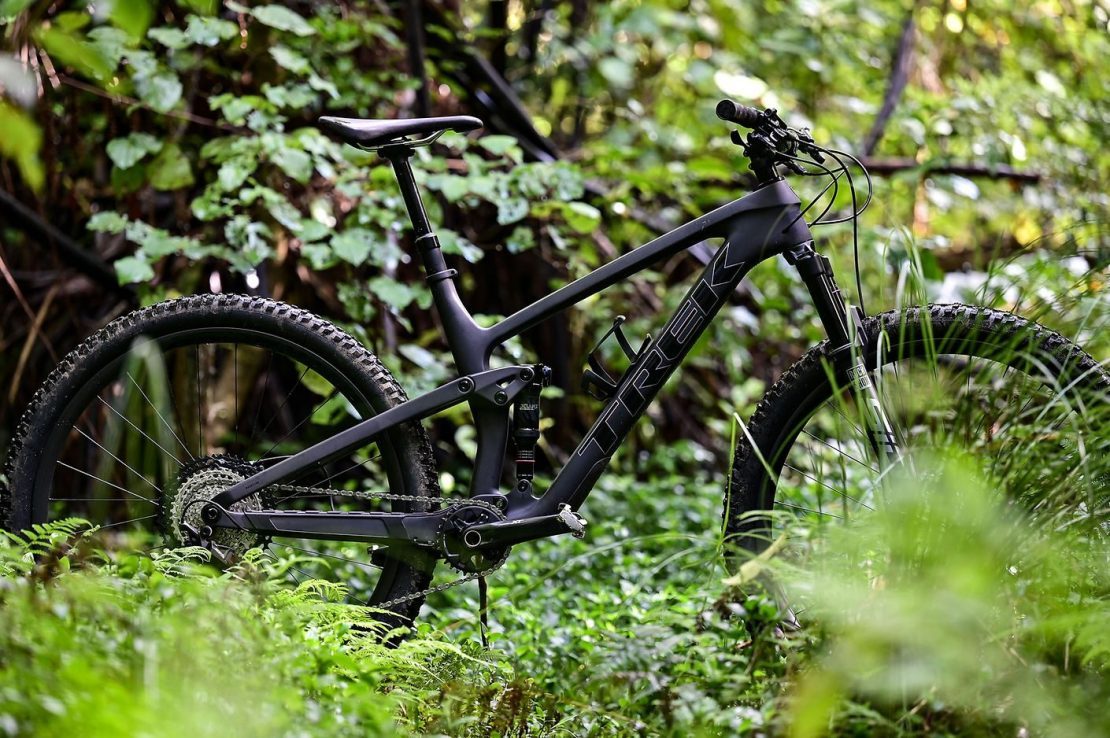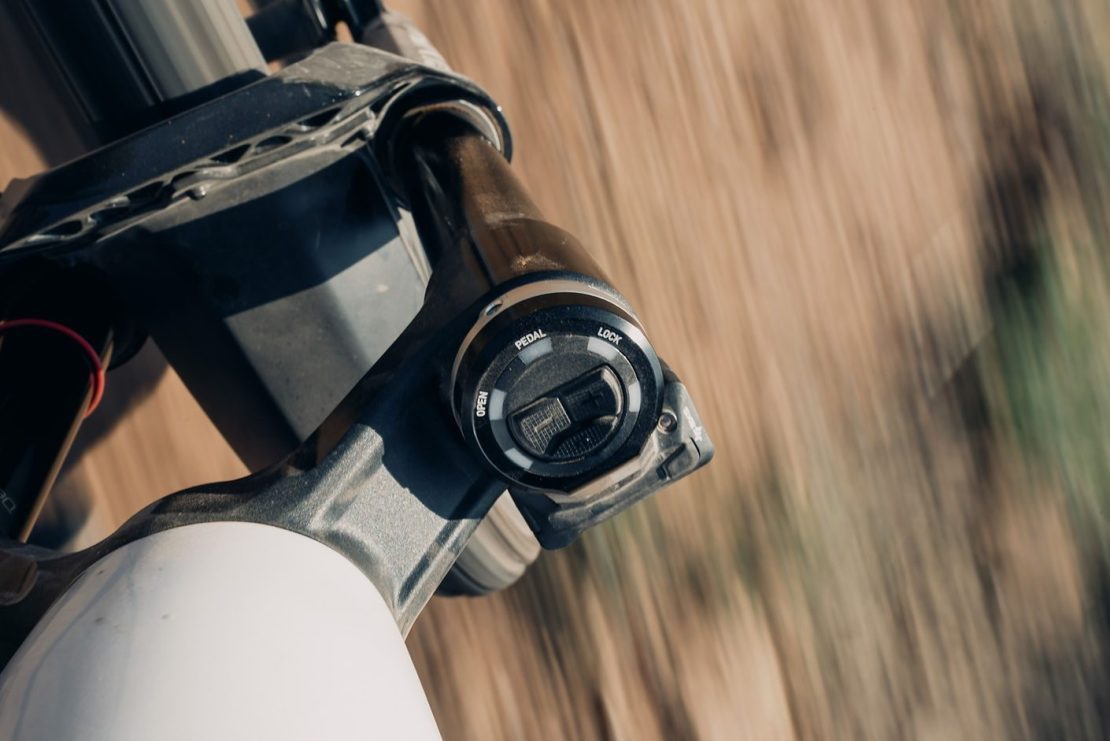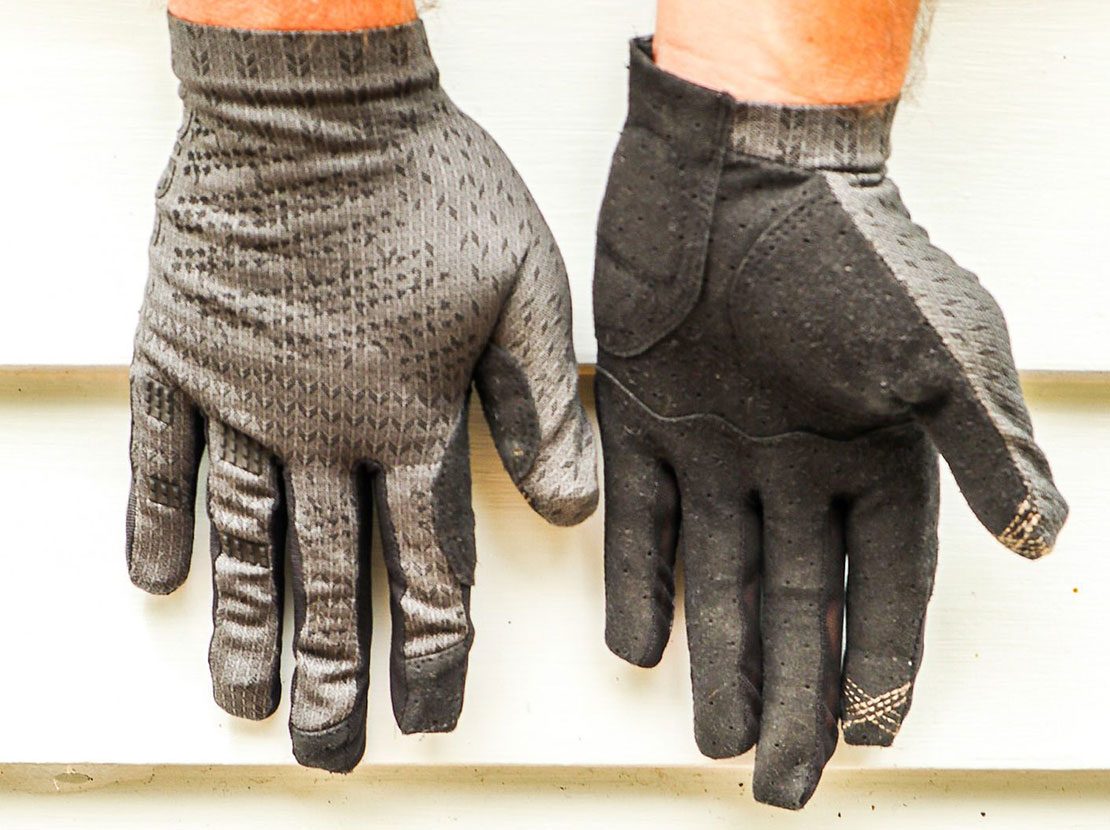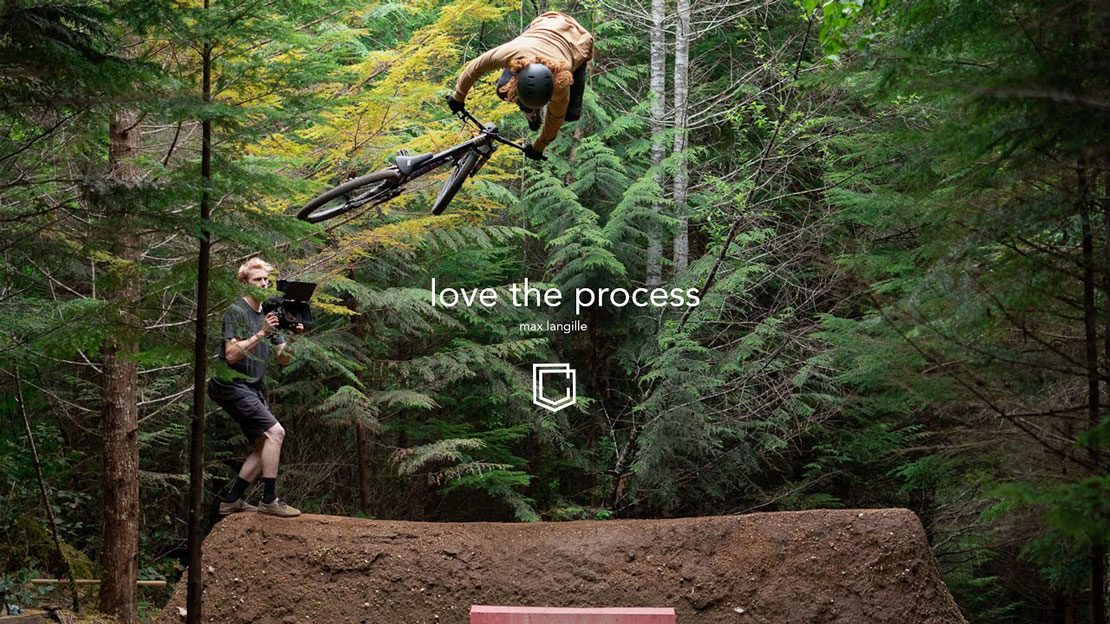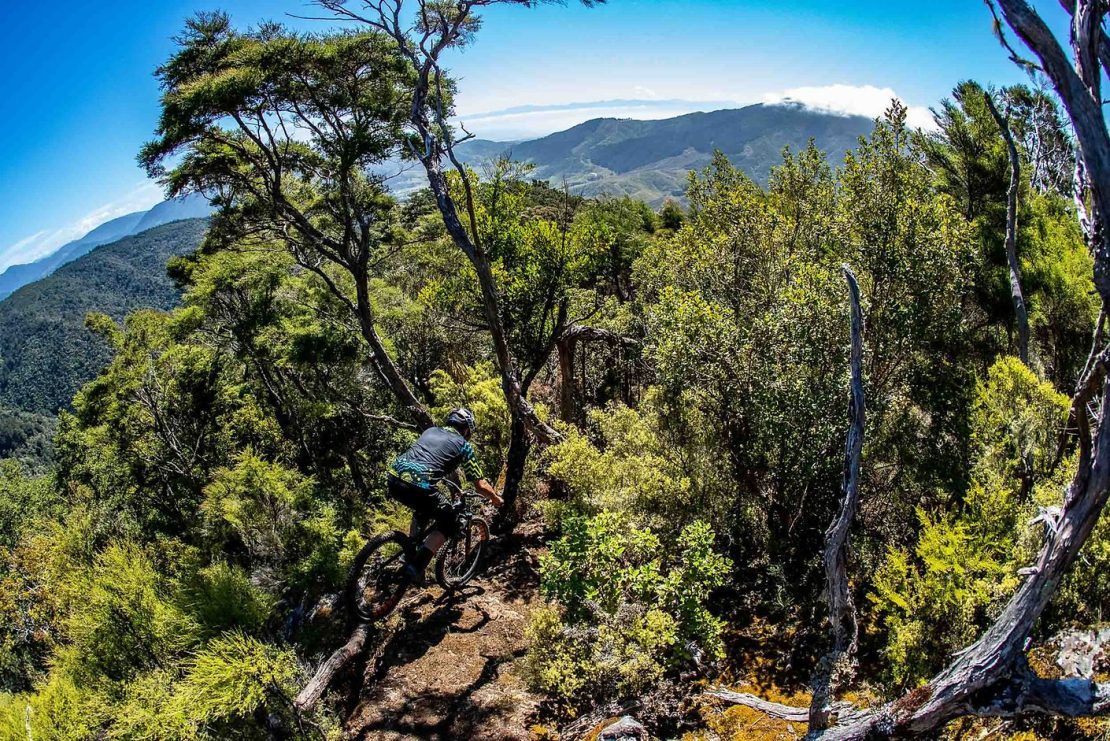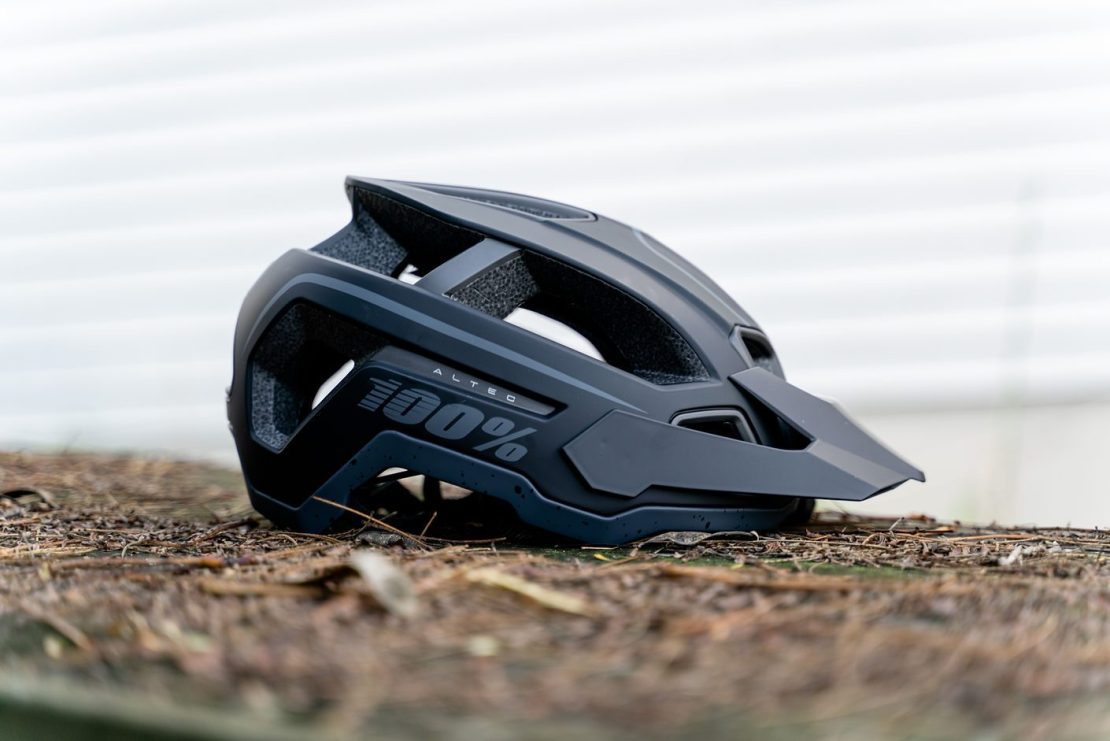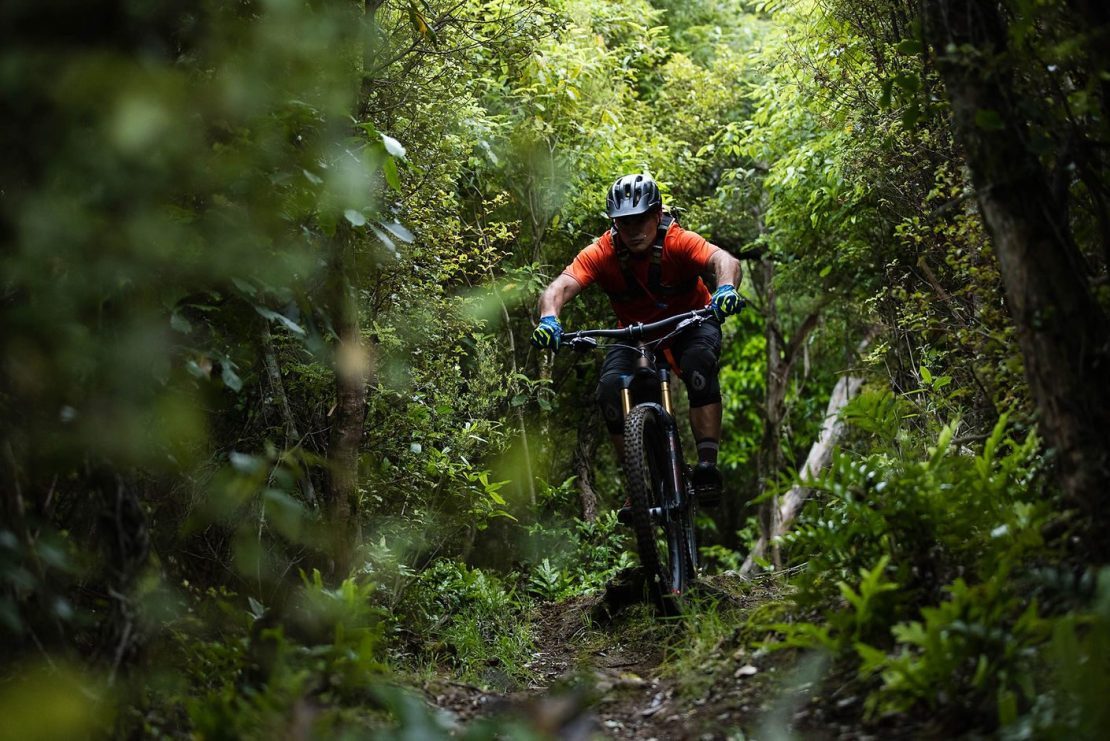Release: The all-new Santa Cruz Chameleon
The Chameleon is a blank canvas, ready to go in whatever direction your imagination takes it. Creativity in wheel size, gearing and component choice make it the perfect muse for freethinkers and freedom seekers alike.
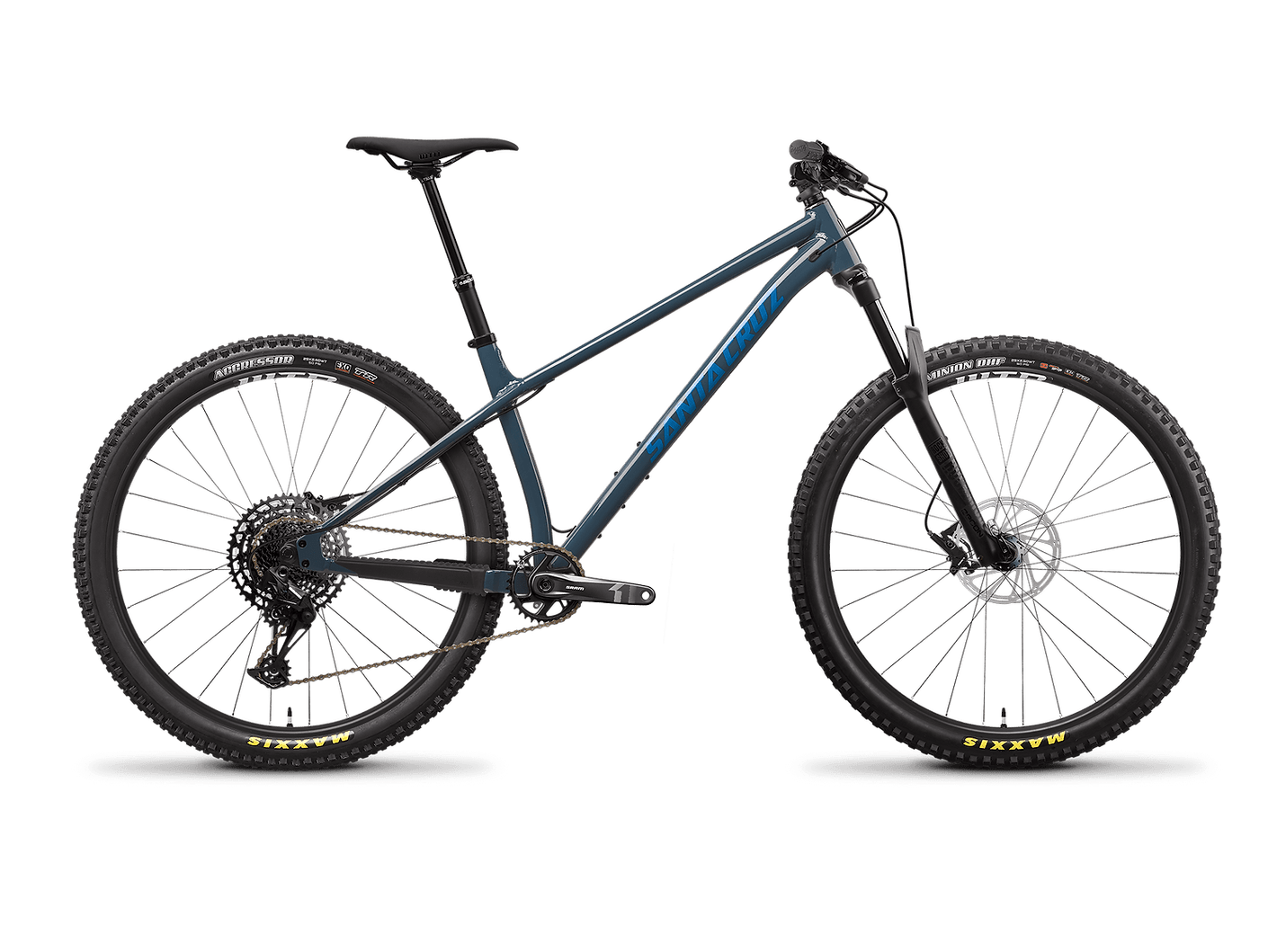
We made the Chameleon for riders who like to sculpt their ideal bike, and aren’t afraid to experiment. Whether 29er or mixed, geared or fixed, multiple major configuration transformations are made easy via the interchangeable dropouts. The low slung top tube and progressive geometry means this bike blends into whatever surroundings you place it. From raucous short-cuts across town to skipping the city altogether. It turns itself to trail exploration with the flip of an Allen key, thanks to the triple-bolt cargo cage mount under the downtube and standard bottle mount within the frame. Whatever the weather, however long the ride, wherever you're going, the Chameleon is so endlessly customizable and adjustable that the only constraint is really your own mind and motivation.
KEY FEATURES
-
MX and 29" wheels
-
130mm fork travel
-
Aluminum Frame
-
Additional 3-bolt bottle / cargo mount under downtube
-
Sizes S-XL
-
Lifetime Warranty
TECH INFO
-
Max tire width: 29 x 2.6-in or 27.5 x 2.8-in
-
Boost 148mm spacing
-
Post mount brakes w/ 180mm rotors
-
ISCG05 chain guide mounts
-
Threaded BB
-
SRAM UDH
-
IS headset
ALL NEW DROPOUT
-
Swap dropouts to change between MX and 29" wheels
-
425-437 mm chainstay length adjustment
-
Singlespeed compatible
-
Direct Post Mount Brake
-
UDH dropout compatible
We made the Chameleon for riders like these five who like to sculpt their ideal bike, and aren’t afraid to experiment. Read about the story of their unique Chameleon builds and their approach to riding. We encourage you to share their words and the photo galleries of their bikes.
Swanee Ravonison’s Patinated Aluminum Pariah
I make steel bicycles under the moniker Pariah and I convert old bicycles (from the 80s, 90s mainly) made up of new and used parts, to create mainly fixed or single speed gear machines. I do this in my bicycle shop slash grocery store, Fée du Vélo.
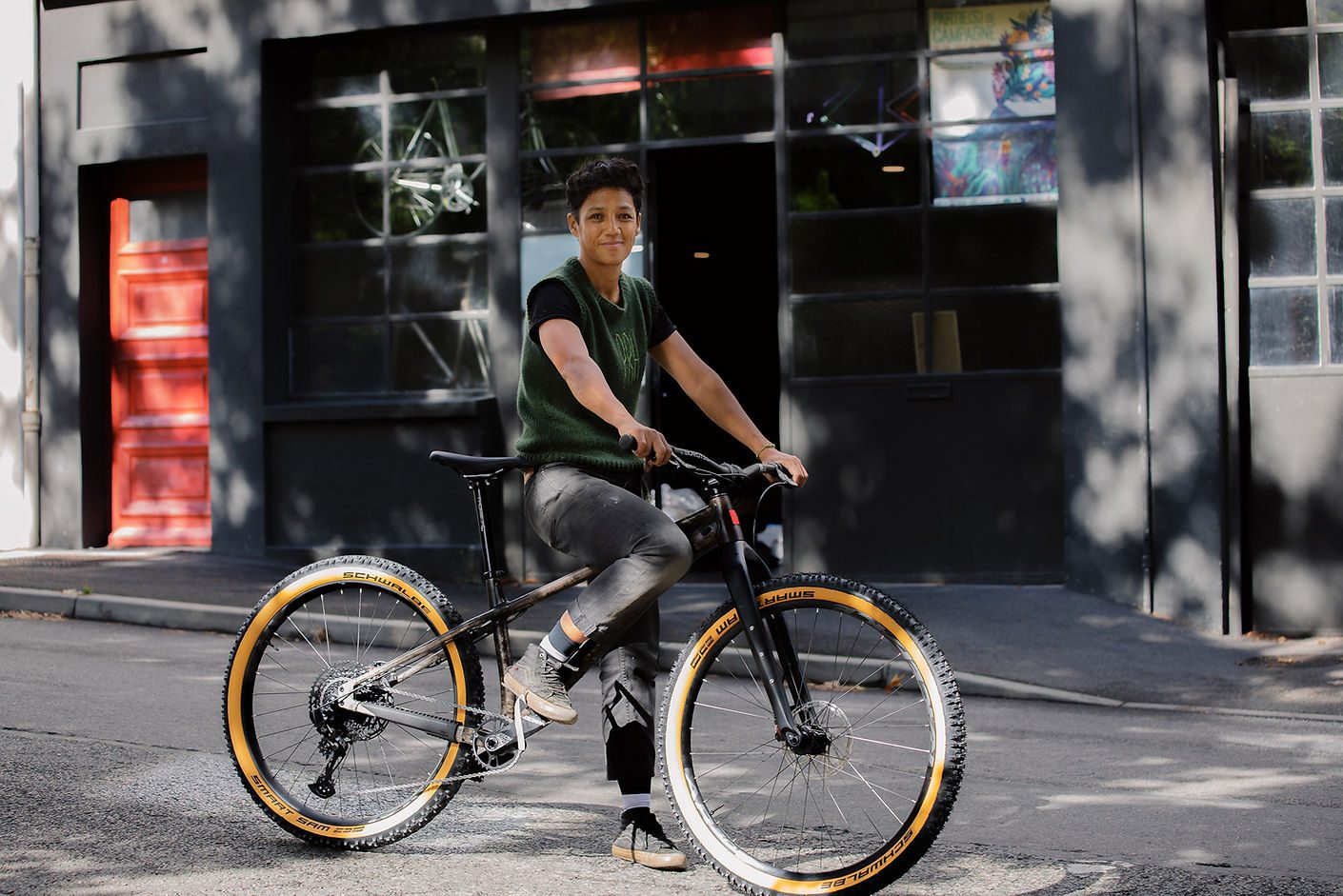
Looks wise I stripped ‘him’ of his flashy dress to make him more discreet, more subtle, more raw, sober, more radical like the Pariah bikes I build. The raw side is my hallmark. It means a bike ages and skates naturally. The traces of time which give any object a certain aesthetic and reinforce their sentimental value. But the more I work and think about natural patinas, the more the result reminds me of my brown body and my scarred skin. Imperfections, natural tattoos, indelible marks, memories of all my falls.
Using Hematite to age the frame is for me the opposite of a lacquer and varnish paint finish. The diluted stone is applied with a brush and the effect is not immediate. It can be stopped by water, and suddenly the result is revealed after drying. The warmer finish brings the frame to life and the tubes disappear. I like to linger to grasp the subtleties, to guess the hand of the craftsman. It’s impossible to get the same result twice. Sobriety never goes out of fashion and the details of the treatment are so subtle that it cannot be covered at a glance.
I kept big-volume tires for a cushioned feeling and installed a rigid carbon fork with mounting points to save some weight and carry bags for long bikepacking adventures. A lower bar helps for pedaling while keeping comfortable. I opted for cable disc brakes so that I could put the suspension fork and a wider cockpit back on without having to bleed. This is a solid enduro hardtail ready for rough and technical terrain.
As soon as the bike was ready I climbed a steep hill, jumped off the sidewalks and did a long sprint as a dancer.

Soon I'll go further afield on it. The Morvan region is my favorite playground because it is accessible to me. First day out would be more cross-country, a loop around Saint Brisson. It would pass through the lakes of Saint Agnan and Settons, around a hundred kilometres. The second day, pure enduro, with technical climbs and descents, barely over 50km and still in Saint Brisson in the Breuil forest.
The destination matters of course, but what I always remember is the quality of the paths, especially if these are small technical and fun trails that require a little commitment. The difficulty of a climb and the adrenaline of a descent makes an outing unforgettable!
Sven Busse's Barmeleon
People call me Sven, or sometimes Steven. Maybe they just call me a little crazy.
For nine years I have had a bar called The GegenÜber in the middle of Bielefeld, right next to a large skatepark. My bar is a melting pot for a wide variety of characters, music, skateboarding, art, all that kind of thing. A look at the facade explains more than a thousand words and the interior of the shop is also characterized by DIY style and a certain punk rock attitude. I wanted to transfer the heart and soul of the GGÜ to the Chameleon from which it became the Barmeleon. The paint was done by the graffiti artist who designed the bar [@ProPhret]
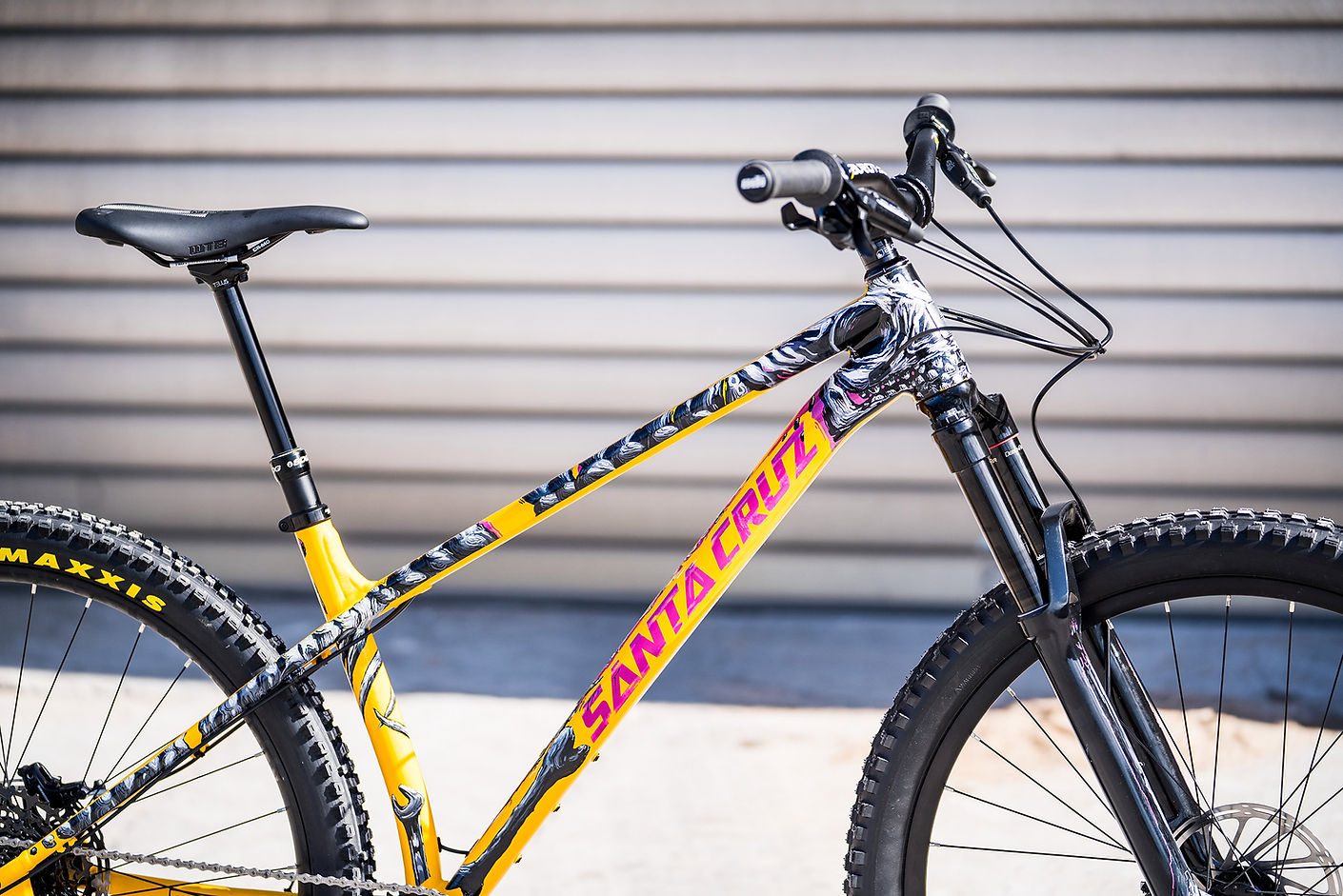
When I started thinking about this bike the first thing in my mind was the song by Orange Goblin – Monkey Panic
“Now it's time for you to run,
Got the fear, so get your gun,
Drink your whiskey, drink your wine,
Take your pills and come inside,
Chaos falling all around,
Monkey tearing up the town,
People running for their lives,
Armageddon's here tonight.”
Basically my biography has been completely interwoven with cycling since I saw the Hoffman Bikes video "Until monkeys fly" on VHS tape at a friend's house in 1998, and especially the street part of Mike Escamilla. I would describe myself as highly addicted to biking. I associate so many great people, friends, trips, spots, injuries and constant progression with cycling. Then, at some point, actually inspired by my younger brother, who is a huge inspiration to me, I got into mountain biking and discovered my love for it. It’s a substitute for BMX riding.
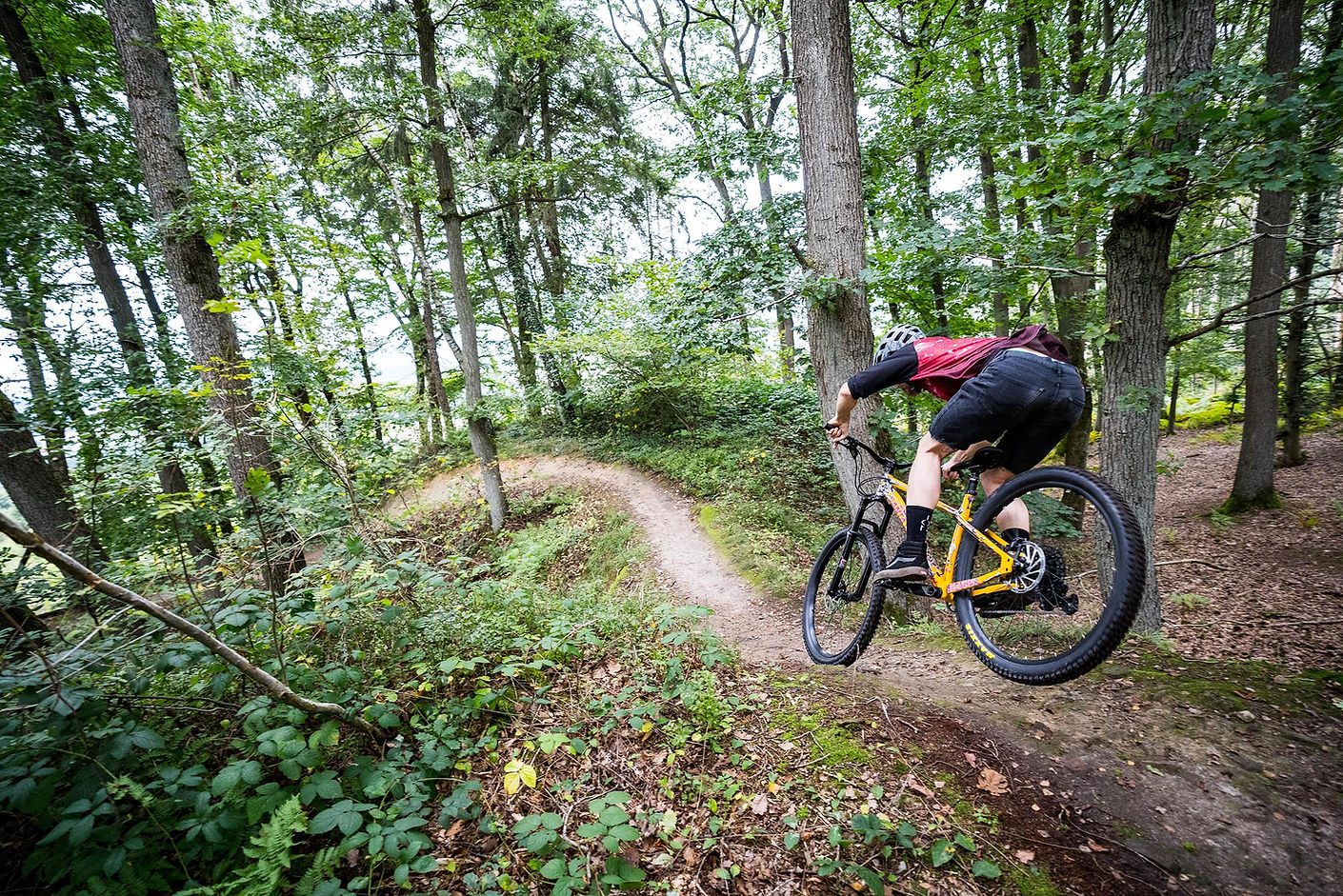
Since I saw the video with Craig Evans (The Steel City’s chameleon), I've been a fan of his shredding style, but also of the bike. I actually dreamed of basically flowing all of my trails with this kind of bike and sure in myself that it must feel damn good. Both to flow my home trails, manual through the city and to send jumps.
Myia Antone’s Medicine Finder
My bike has taken me to places that previously I’d only visited in dreams. Places where our stories come from and where medicine was harvested by my ancestors. My mountain biking journey started during the peak of the COVID19 pandemic, which meant I was riding alone – a lot. However, I knew I was never really alone. I was constantly surrounded by the trees and plants that sustained my community for thousands of years. In many ways, my bike allows me to time travel to quiet moments where I can be with my ancestors.
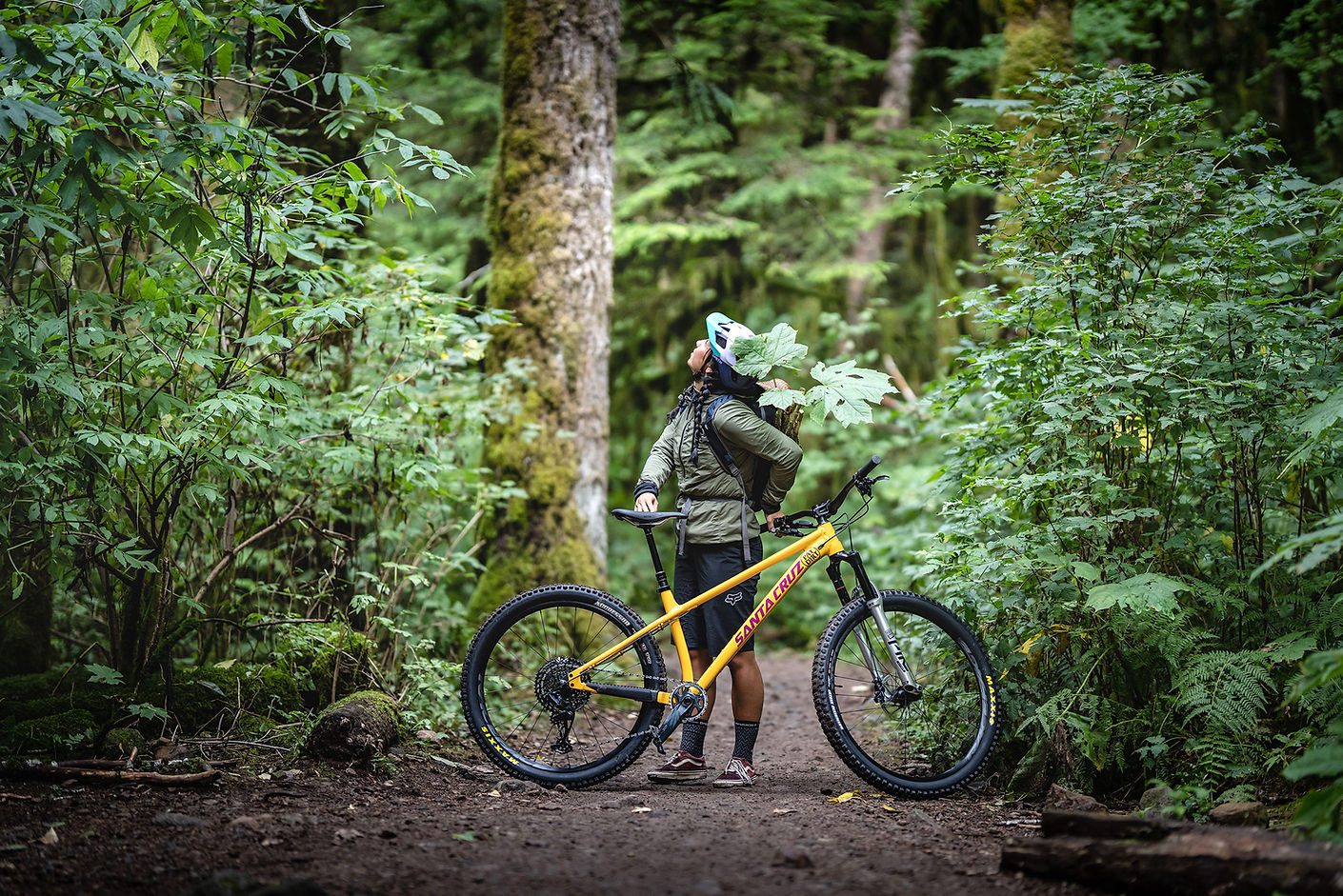
It’s hard for me to separate mountain biking from plant harvesting, I find so many similarities between the two. Biking teaches me how far my legs really can take me, how to get back up after a fall, and that everyone looks better with a little bit of dirt on them. Plants teach me that we can all grow and thrive in different environments, you can’t judge someone or something based off of one season and you grow stronger the deeper your roots. If anything, the two seem pretty interchangeable.
My understanding of our relationship to land is that it is an extension of ourselves. We love and respect the land as our kin, and understand that the world will teach you everything if you look long enough. I was taught the forest was our pharmacy - when we were sick, that is where we would go for our medicine. Today, I think of mountain biking as medicine in the forest too. The ups and downs bring healing to every inch of my body, and I always come home with a smile as big as can be.
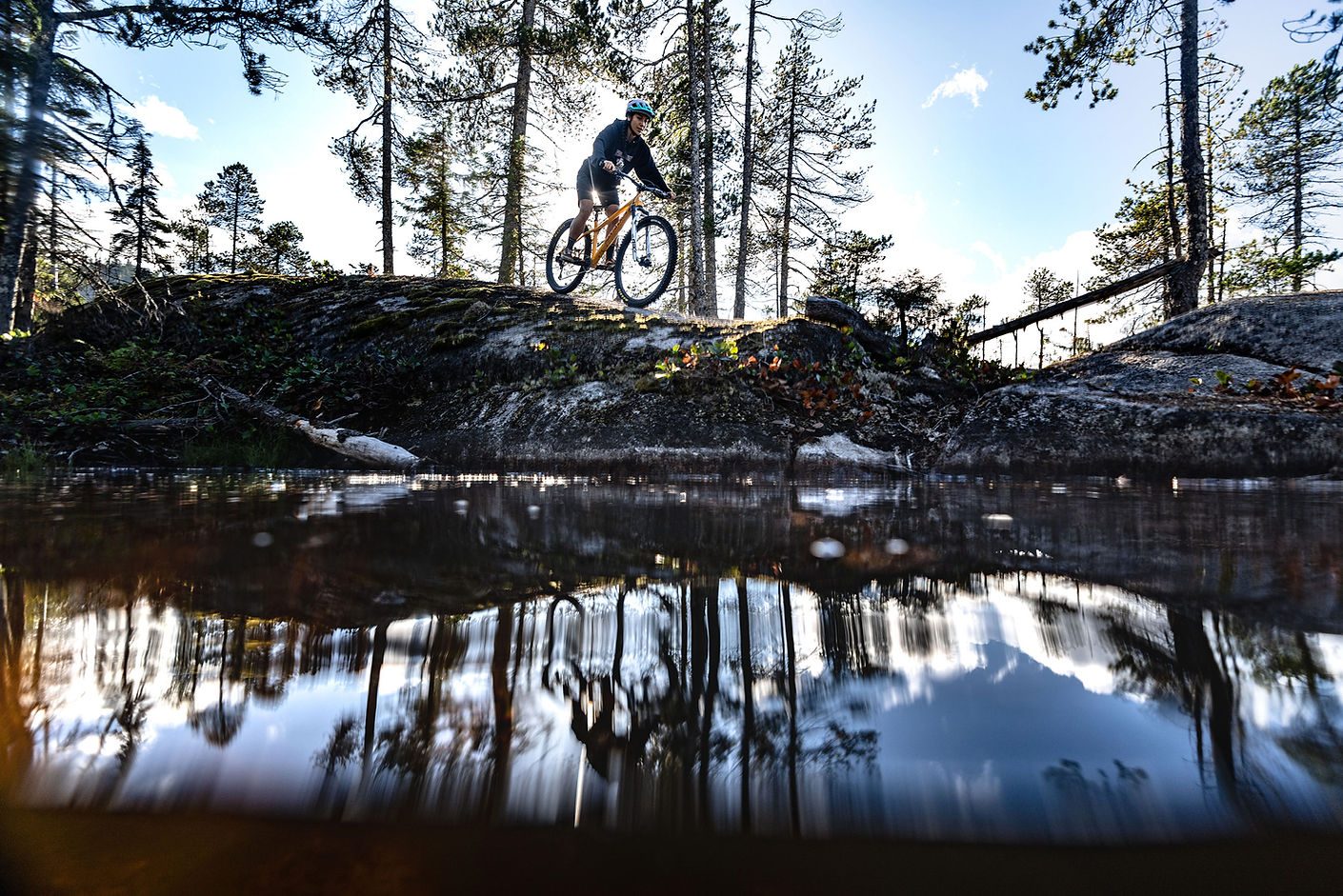
Today, I am finding new ways to do old things. My ancestors have been harvesting from these lands and waters since time out of mind. I follow in their footsteps, but sometimes my feet just happen to be on pedals. My bike brings me to hidden patches of wild strawberries and devil’s club galore. I bring my backpack for snacks, bike tools and space to fill with plants to take home. How did I get so lucky to have a beautiful territory that is also world famous for its bike trails? I am rich in love and beauty from my time spent on the land. However, wealth also means having enough to give away. How do I embody the teaching of reciprocity within mountain biking? How do we give back to a sport that gives us so much?
Today, Indigenous Women Outdoors is how I give back to my communities. We offer programming for Indigenous women and non-binary folks to come out together on the land, partake in mentorships and try new outdoor activities. We have so much to share with the outdoor community, and it is finally time to listen.
Eric Ackermann’s Pink Space Goblin loc
My friends call me Baby Legs Eric.
I work in the warranty department of the SCB Factory and have been with the company for over 11 years. If you’ve ever requested something from our factory it was probably me that fulfilled it. You’re welcome.
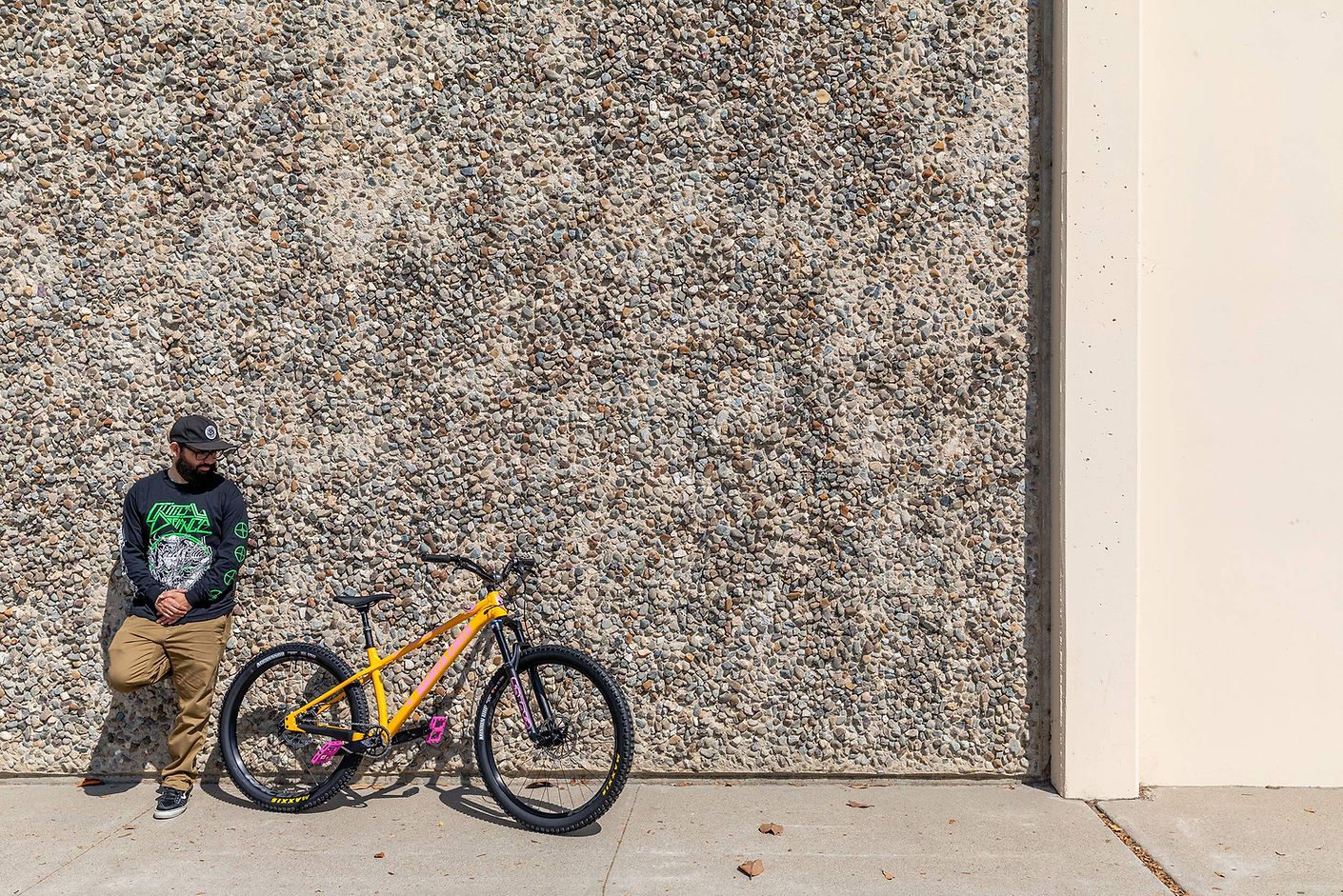
The only thing that interests me is the absurd and keeping life as simple as possible.
I have two important tenets that I base my life around: 1. Don’t be a picky eater and 2. Never miss an opportunity to keep your mouth shut.
I wanted to get down to basics and turn it into a single speed bike to bomb around town. I was really into the color of the frame and thought pink would be the loudest contrast. It makes the bike look like it just came out of a comic book. I spend a lot of my free time illustrating and have gotten really into digital art so I knew I had to create some custom decals to slap all over it. Being able to cover one of my favorite bikes in artwork I drew was definitely my favorite thing.
I ride this bike all over Salinas, crushing burritos and Jarrito soda waters. I plan on building one just like it for my wife so we can take our dogs on adventures.
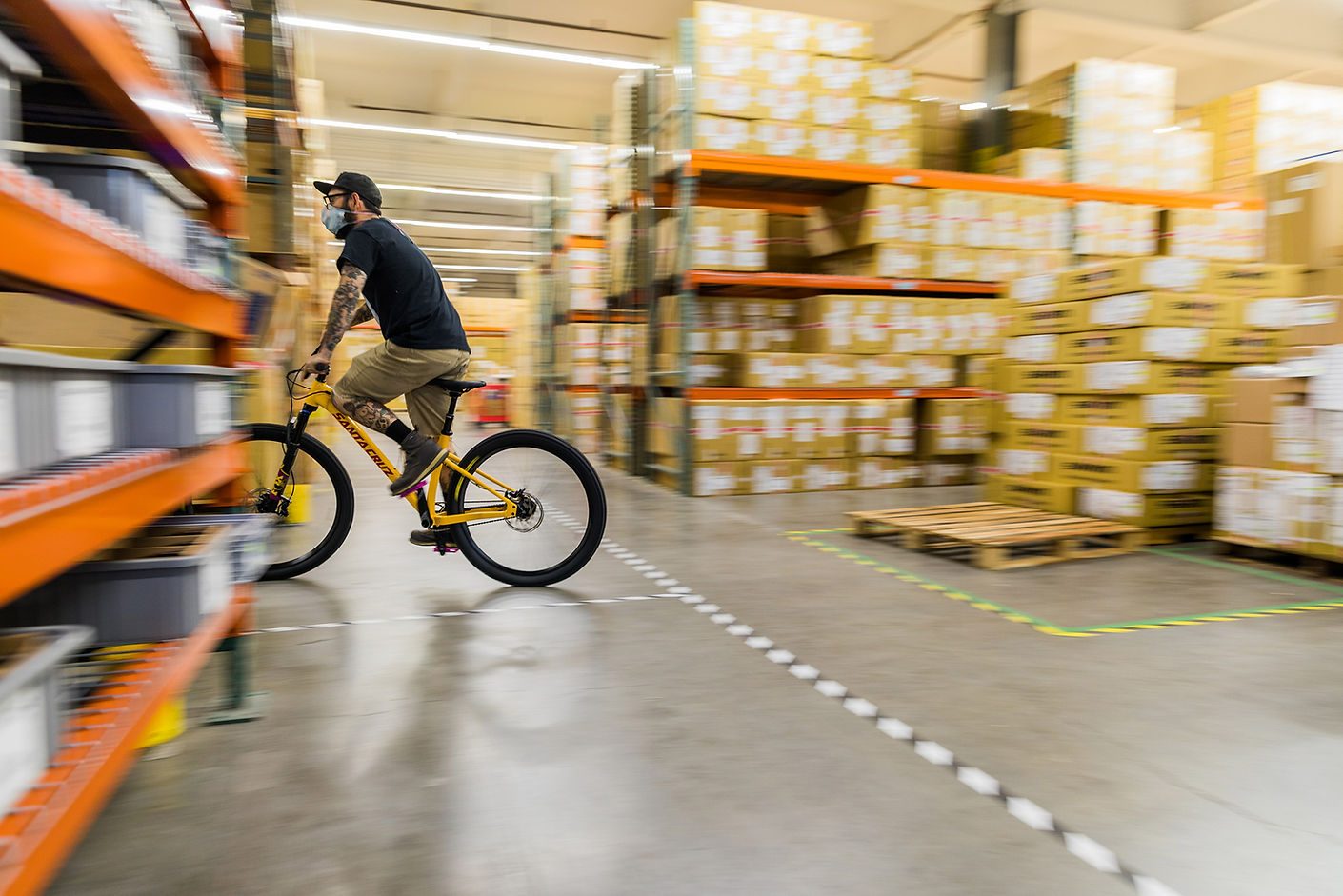
Paint: I kept the original yellow since I love it so much.
Frame size: Medium
Frame mods: Left as is since I didn’t want to mess up the natural build of the bike.
Fork: Yup, it’s got one.
Amount of airs in the bouncy bit at the front? A whole bunch
Number of gears: NONE
Which side do you have the rear brake on? Right side.
Wheel size(s): 29 in front 27.5 in rear
Tire pressure: A whole bunch
Tire type: Somewhere between hella chunky and smooth as smooth peanut butter
Mike Hill’s Tool Carrying Tool
My friends call me Mike. I build BMX frames for my company called Deathpack BMX.
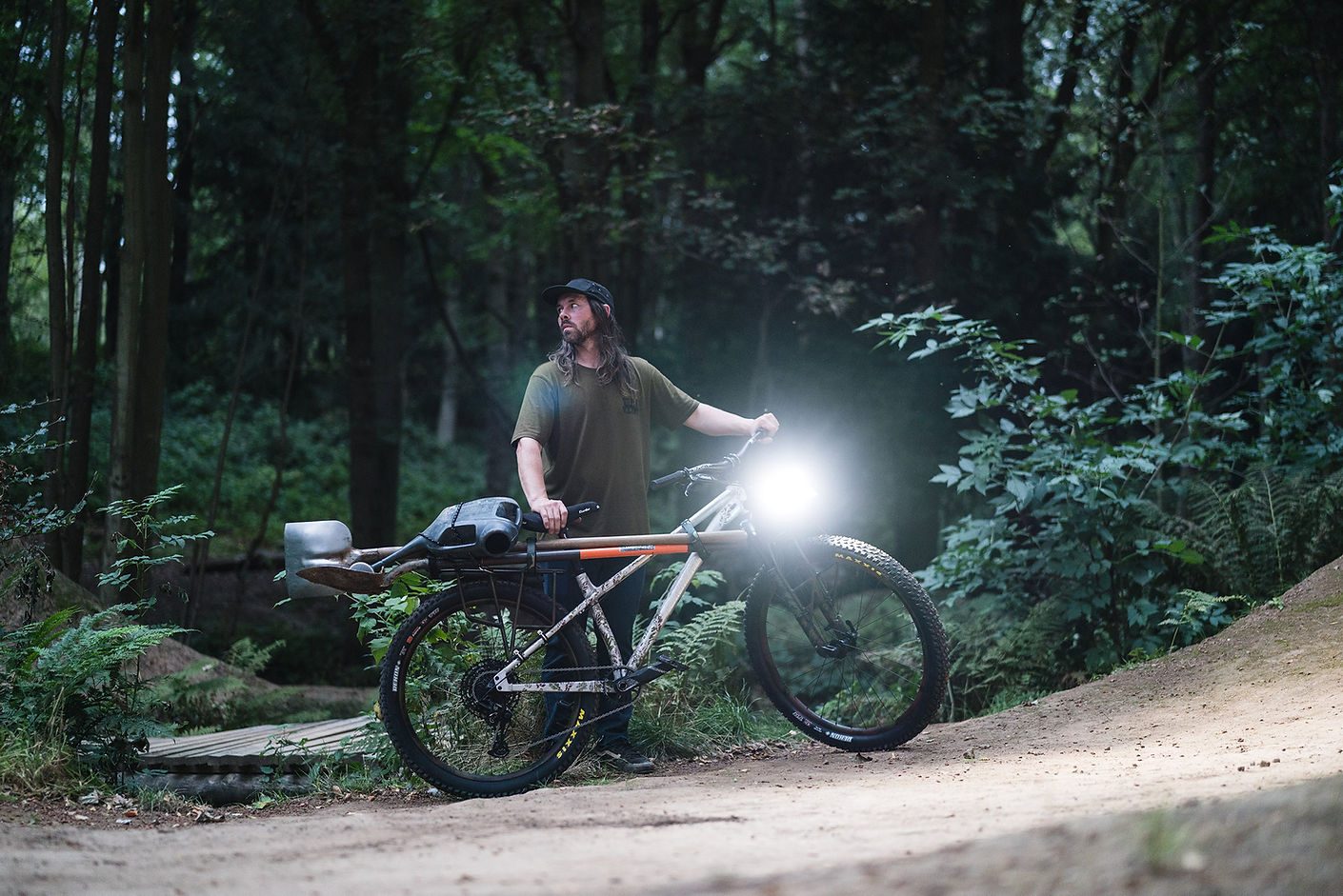
I owe my passion for bikes to my dad. He had me surrounded by bikes for as long as I can remember and riding as soon as possible. I can't imagine life without bikes, be it pedal powered or motorised, there's nothing like it.
This is an off-road workhorse to carry tools to the trails through the winter from my van down a two mile single track to the bottom of a wood where the jumps are. It's like a swamper truck or winter hack. This bike is a tool. I go knock about on it, push iron, move dirt.
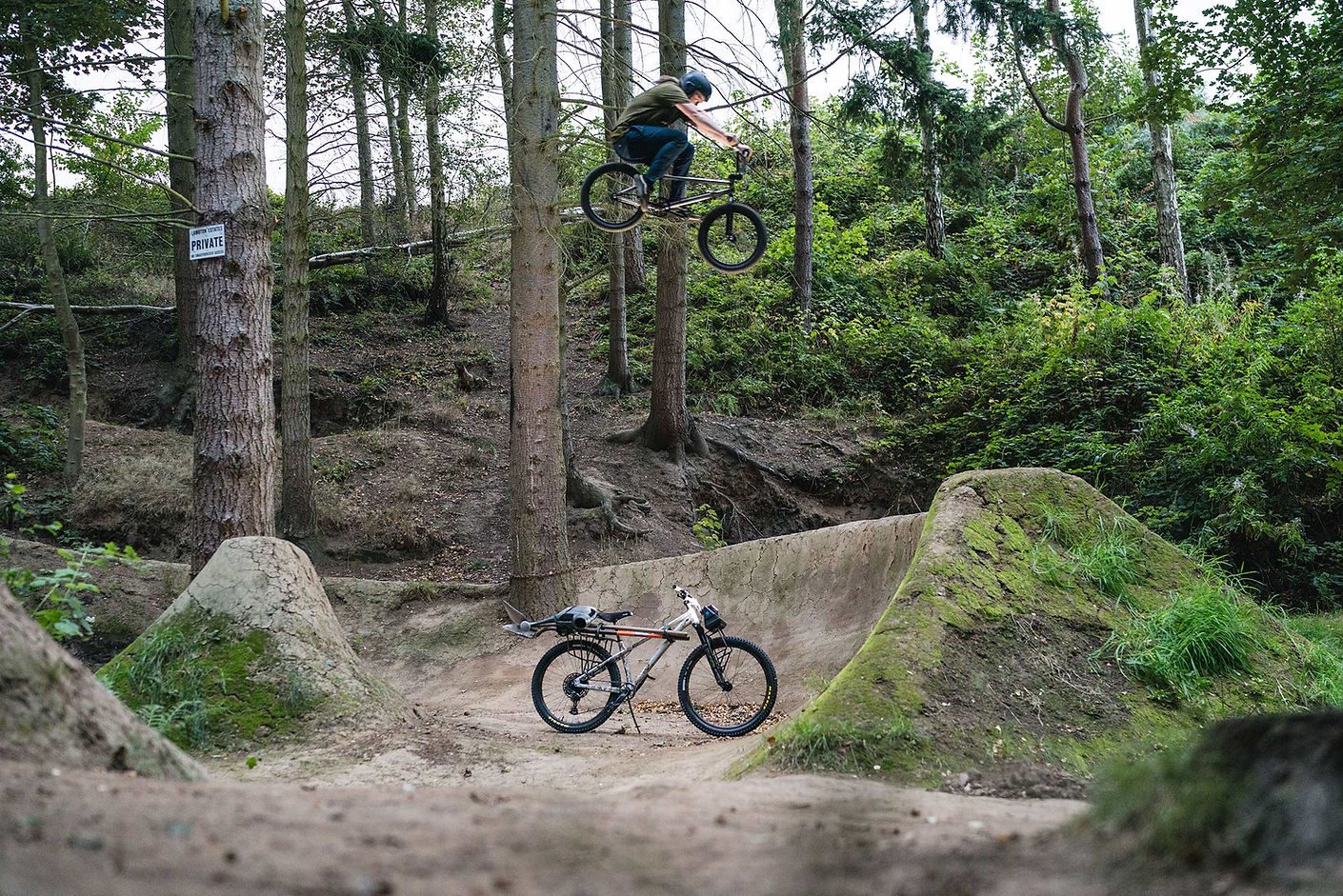
Paint: none
Frame size: medium
Frame mods: brackets and racks to carry panniers luggage and tools, etched frame logos and patina raw finish
Amount of airs in the bouncy bit at the front? Maximum
Number of gears: All of them.
Brakes, yes or no? Yes but maybe just back
Which side do you have the rear brake on? Right
Wheel size(s): 29 front, 27.5 rear. It’s a skullet
Tire pressure: 50psi
Tire type: Fat as possible and somewhere in between knobby and dirt tiller
Video: Brandon Semenuk's 2021 Rampage Bike Build
Brandon Semenuk's 2021 Red Bull Rampage build is the bike you'd expect a five-time Joyride and three-time Rampage champion to ride. With big travel, and big trick potential, his custom 27.5 / 26 mulleted Trek Session is set up with a one-of-a-kind BlackBox AXS drivetrain, and a 190mm single crown RockShox Zeb Ultimate. Master mechanic, Sean Murphy, of Fluid Function in Squamish, B.C. assembled one of his two builds that he'll be travelling to Red Bull Rampage with, as he seeks an unprecedented fourth title.
First Impressions: 2022 Trek Top Fuel
Trek has just released the latest version of their popular Top Fuel bike, I’ve had it for a month already so these are our first impressions. Look out for the full review in the upcoming issues. With the release of the Supercaliber taking the place of the full-noise XC race bike, the Top Fuel had the opportunity to evolve out of that same XC space, and that’s exactly what it has done, moving firmly into the ‘trail’, or, - dare we say it - ‘downcountry’ segment.
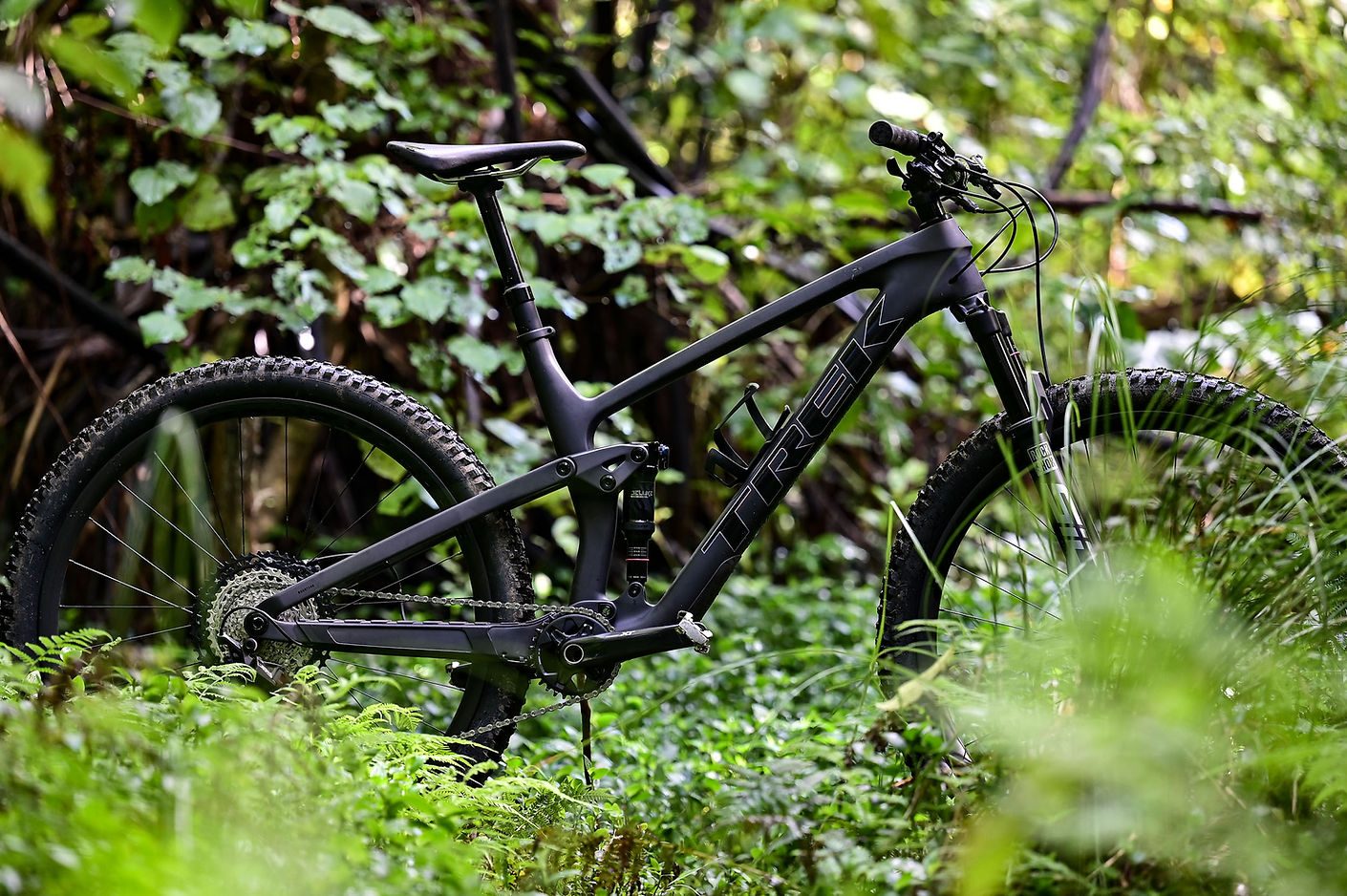
For 2022 travel in the rear ups from 115mm to 120mm, and is matched by a 120mm fork. The model I have had on review is the 9.8, which means you get the full carbon frame along with Bontrager carbon wheels, and a full XT build kit from tip to tail. Out of the box, I personally liked the matte carbon look with holographic details around the edge of the logos, it’s subtle, smart and stealthy. But if you’re bolder than I am, it’s also available in a pretty striking Red/Purple/Yellow fade too. All the housing is internal, which completes the sleek look, and also internal is your tool kit! Or it can be if you want it to be with a handy tool storage compartment integrated under the bottle cage, sadly you have to provide your own tools, but it does come with a nice little pouch to wrap things in. I’m looking forward to seeing just how much stuff I can jam in there, it looks like an ideal shape for a long cream doughnut. At the bottom of the down tube, there is a plastic armouring to protect the carbon, and a chunky rubberised chainstay protector to keep things quiet. Interestingly for an XC-oriented bike, there is only one bottle cage mount, which seems strange as this kind of ride would seem to be perfect for longer stage or marathon racing. Our 9.8 model has the full XT mentioned kit, which includes the superb 4-pot XT calipers and a 10-51 tooth cassette.
With 120mm travel, 66.0-degree head angle, and 2.4” tyres, the Top Fuel is set, on paper at least, to be a pretty fun whip. The term ‘Top Fuel’ is a term associated with American drag racing, which is all about acceleration, and that is immediately noticeable, the Top Fuel draws on its XC roots and gets up to speed fast, but with modern geometry and tyres that give the confidence to push through the corners - it can stay there, where with a more traditional XC bike might ask you be tempted to pull back.
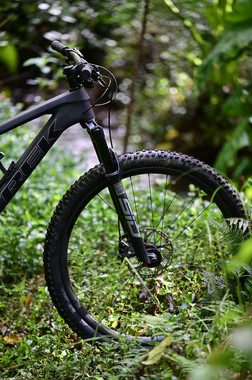
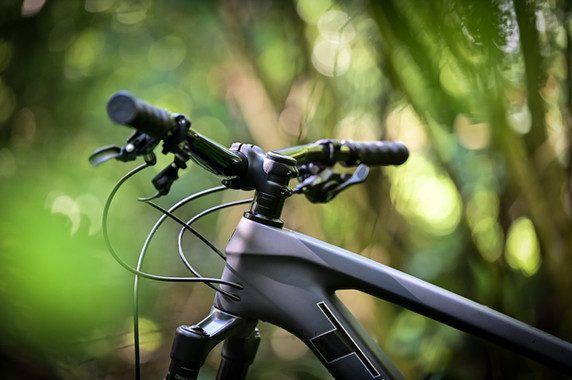
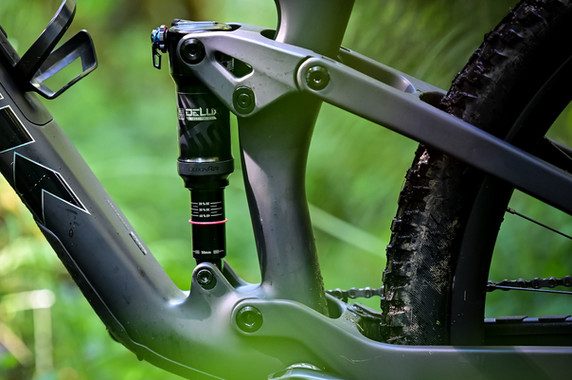
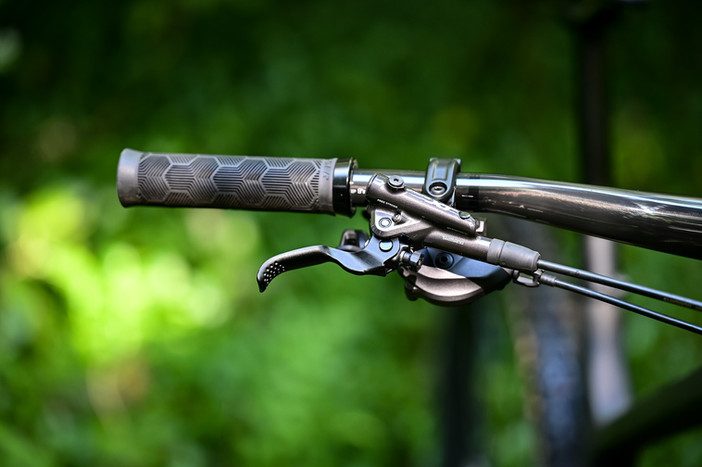
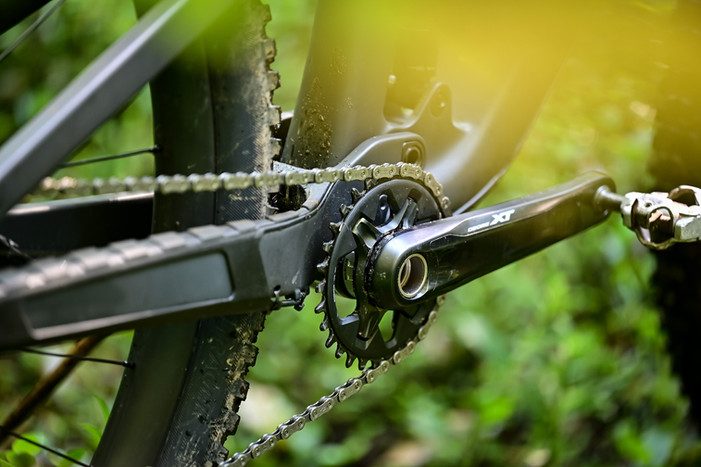


After a month of riding on the Top Fuel, I left thinking, ‘this is the kind of bike a lot of people should be riding’. My totally un-scientific belief is that thanks to effective marketing companies, more riders are riding longer-travelling, heavier, squishier (yes it’s a technical term), bikes than the terrain really requires. Part of that has been the evolution of geometry. It has only been longer travel bikes that have had the matching geometry that inspires confidence at speed, or over steep terrain. But with more modern geometry (read: longer, slacker) trickling into bikes like the Top Fuel, you have the choice of riding lighter, shorter travel bikes, with more confidence over technical terrain. What’s more, tyre choice can often be one of the most significant choices in what terrain a bike will excel on and with Trek speccing the new 2.4” XR4 tyres, they clearly had this same thinking in mind. They are noticeably chunkier tyres than you might think to find on a 120mm travel bike, and probably reflect the kind of personal changes most riders end up making to their bikes in time.
Anyway, all this theory aside, spending this month on the Top Fuel only confirmed my thinking - I felt I was undeniably faster over 90% of the terrain that I usually ride than I was on a longer travel bike. This was confirmed when finishing one descent, and waiting at the bottom for my regular riding partner to catch up, his immediate comment when he eventually arrived was “You were RAPID down there today!” The light wheels (and overall lightweight, 27.80 lbs / 12.61 kg) and fast engaging 108t freehub means it gets up and going very quickly.
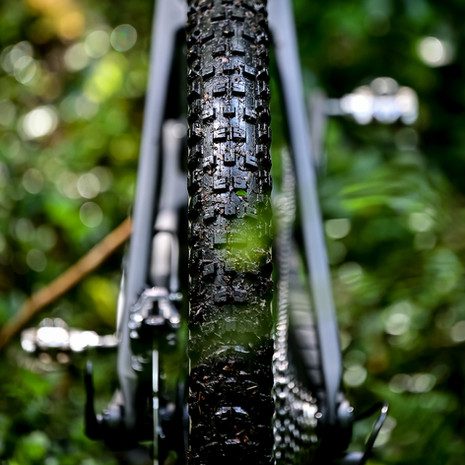
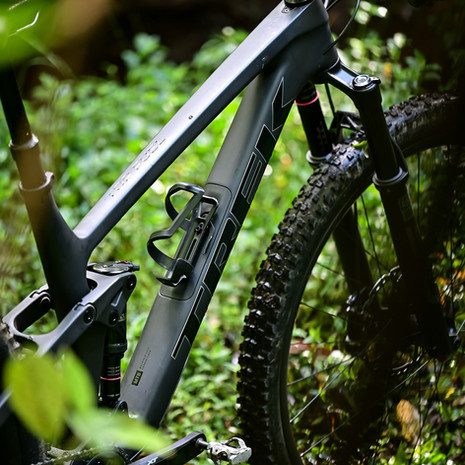
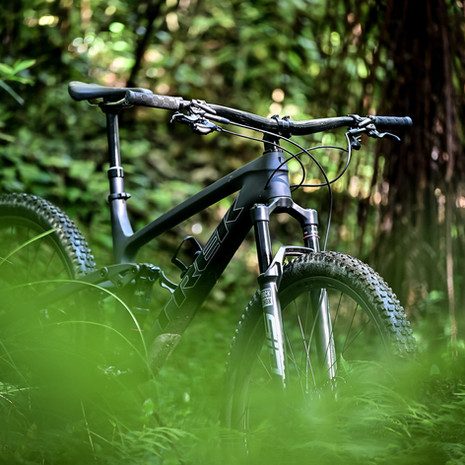
On the suspension front, the SID Select+ does the job nicely, but I’m looking forward to spending some time fine-tuning this. I’m thinking that it might benefit from the addition of a bottom-less token. The frame is rated for a 130mm fork as well, so if you really wanted to take a step towards the down part of the down-country putting something like a Pike on here would really make it rip.

So far I have been really enjoying this bike, and I am really hoping the time I have it for isn’t going to be hampered by another lockdown because it really makes me want to get out and go for a good long ride each time I look at it. Look out for the full review coming soon.
Words & Images: Lance Pilbrow
Release: RockShox Flight Attendant
Flight Attendant removes suspension complexity to elevate your ride experience. Our relentless pursuit of simplicity is driven by one goal: to unlock your full riding potential.
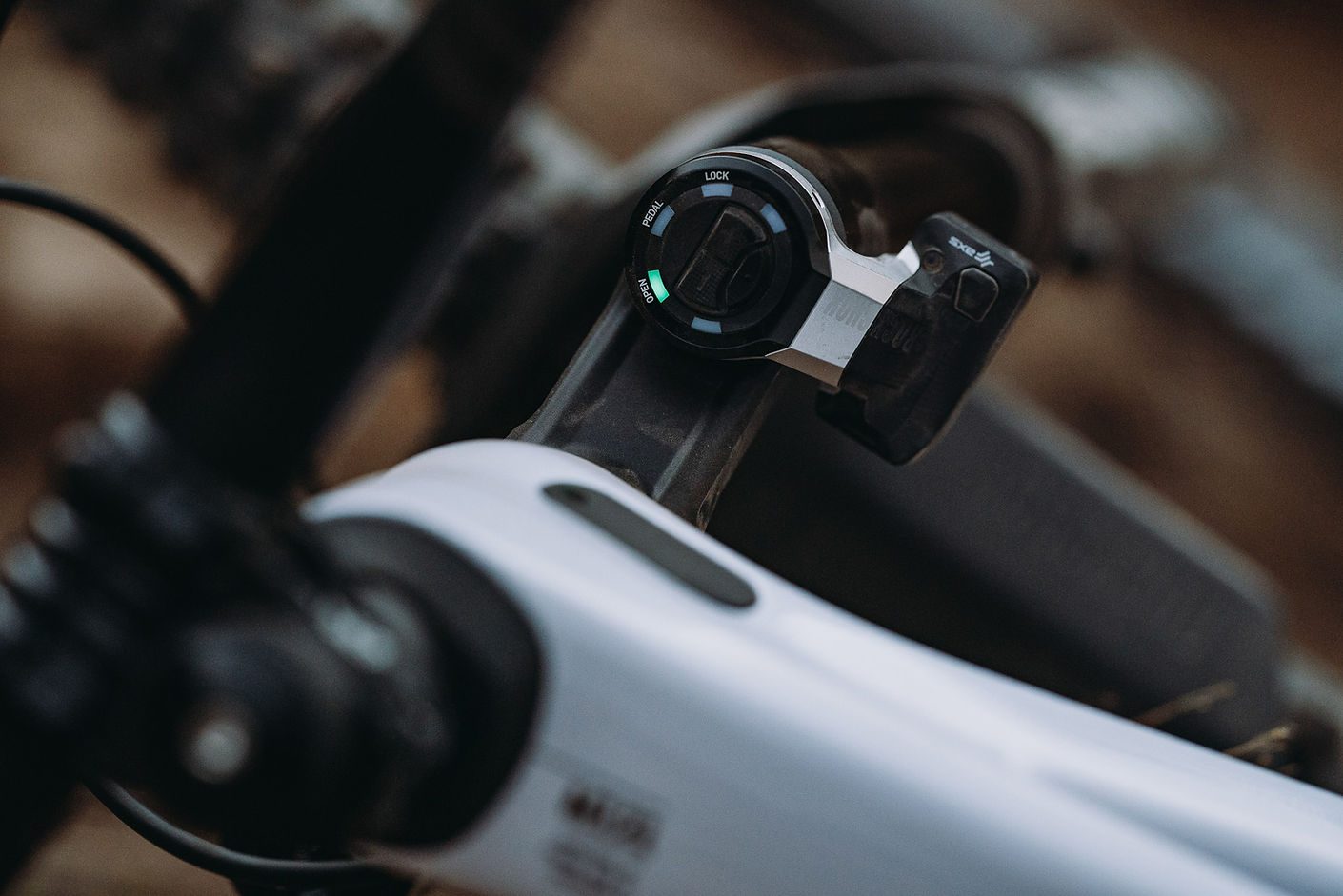
FLIGHT ATTENDANT
The only automatic suspension system that listens to the rider and responds in real-time. Flight Attendant uses a suite of sensors to read rider and terrain inputs to anticipate the perfect suspension position—enabling you to ride faster, ride longer, and spend less energy adjusting your suspension and more time focusing on what matters most: the unbridled joy of riding.
SRAM AXS TECHNOLOGY
The unmatched interface you’ve come to expect. Crystal clear communication between components. Beautiful cable-free design, meticulously crafted to disappear.
SENSE IT FIRST
A suite of sensors onboard your fork, rear shock and crankset work in unison to detect every bump, pitch, and pedal stroke made. Flight Attendant is the only automatic suspension system that listens to the rider and paints a picture of the complete riding experience in real time.
FUELED BY SCIENCE. FEELS LIKE MAGIC.
Developed over thousands of trail miles around the world, Flight Attendant’s on board
algorithm is scientifically engineered to do the complex thinking for you. It analyzes the
constant flow of ever-changing data to anticipate the perfect suspension setting for the rider and what the trail demands.
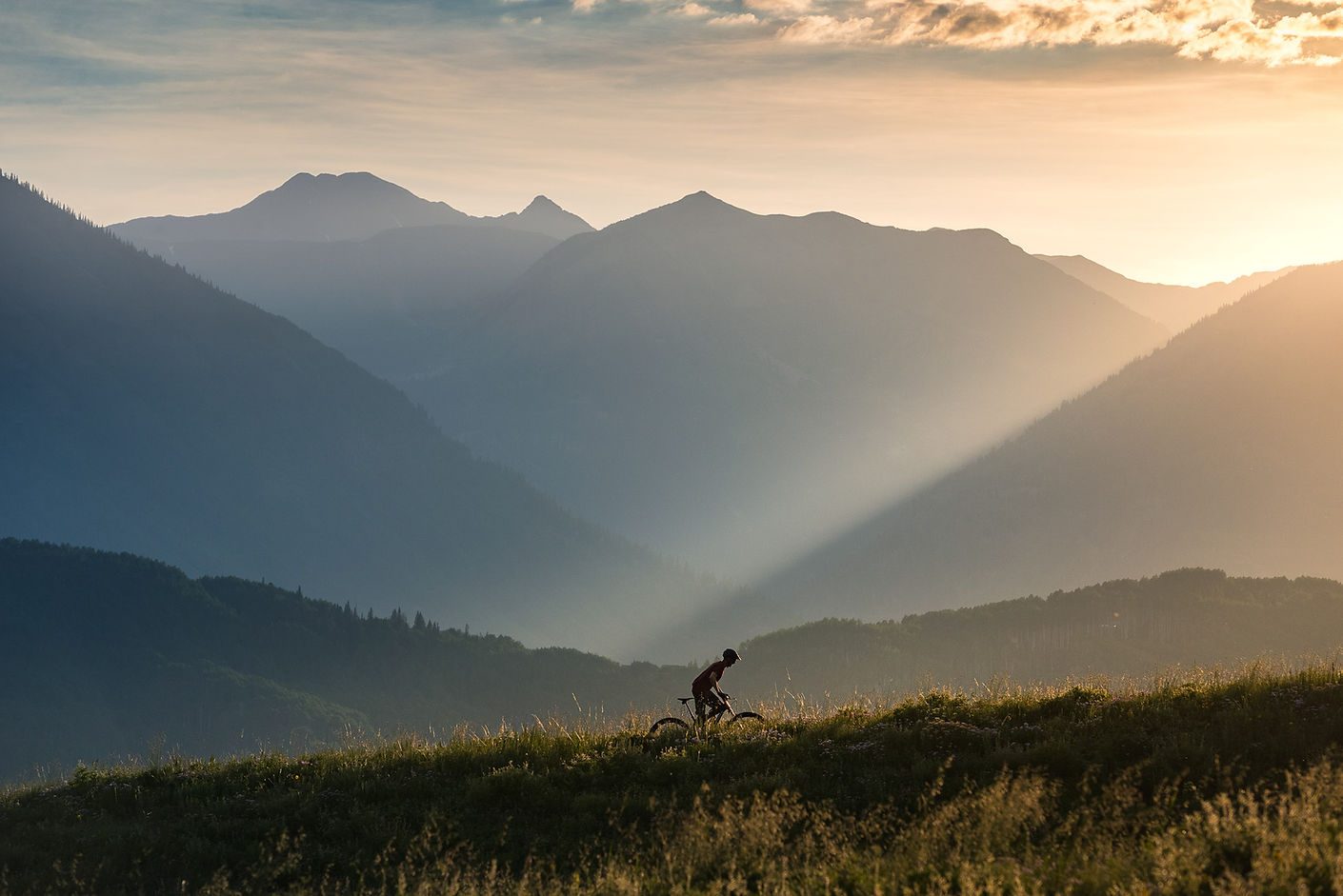
FURTHER FASTER
Your burly Enduro bike becomes fit for longer climbs. Your trail bike becomes as efficient as a cross-country world cup steed. Get the most return on every pedal stroke, weight shift, and micro adjustment you make, there’s no energy wasted. Flight Attendant capitalizes on every ounce of effort you put in, optimizing your suspension and maximizing your bikes performance all while you ride. You’ll ride further, faster and with more energy gained.
EFFICIENCY ON DEMAND
Alt: In Auto Mode, Flight Attendant deciphers every input and sends its commands to the AXS-enabled fork and rear shock to instantly react. It does the critical thinking for you. Your suspension is always in the right position at exactly the right time, automatically shifting between Open, Pedal and Lock compression positions before the thought ever crosses your mind.
Life isn’t black and white, or as easy as on or off. Balance is often found somewhere in-between. A 3-position system provides more choice and efficiency gains in more situations for the rider. With Open, Pedal and Lock compressions positions, the Flight Attendant algorithm finds the best connection to the trail, providing the right level of support and comfort at the same time.
OPEN
The moment you point your bike downhill or your tires hit a big impact, Open position allows your suspension to utilize the full amount of available travel while feeling plush and ready to absorb the next big hit.
PEDAL
The sweet spot for efficiency. Pedal position stiffens your suspension just the right amount to maintain traction, reduce excessive suspension movement and deliver the most output from energy well spent.
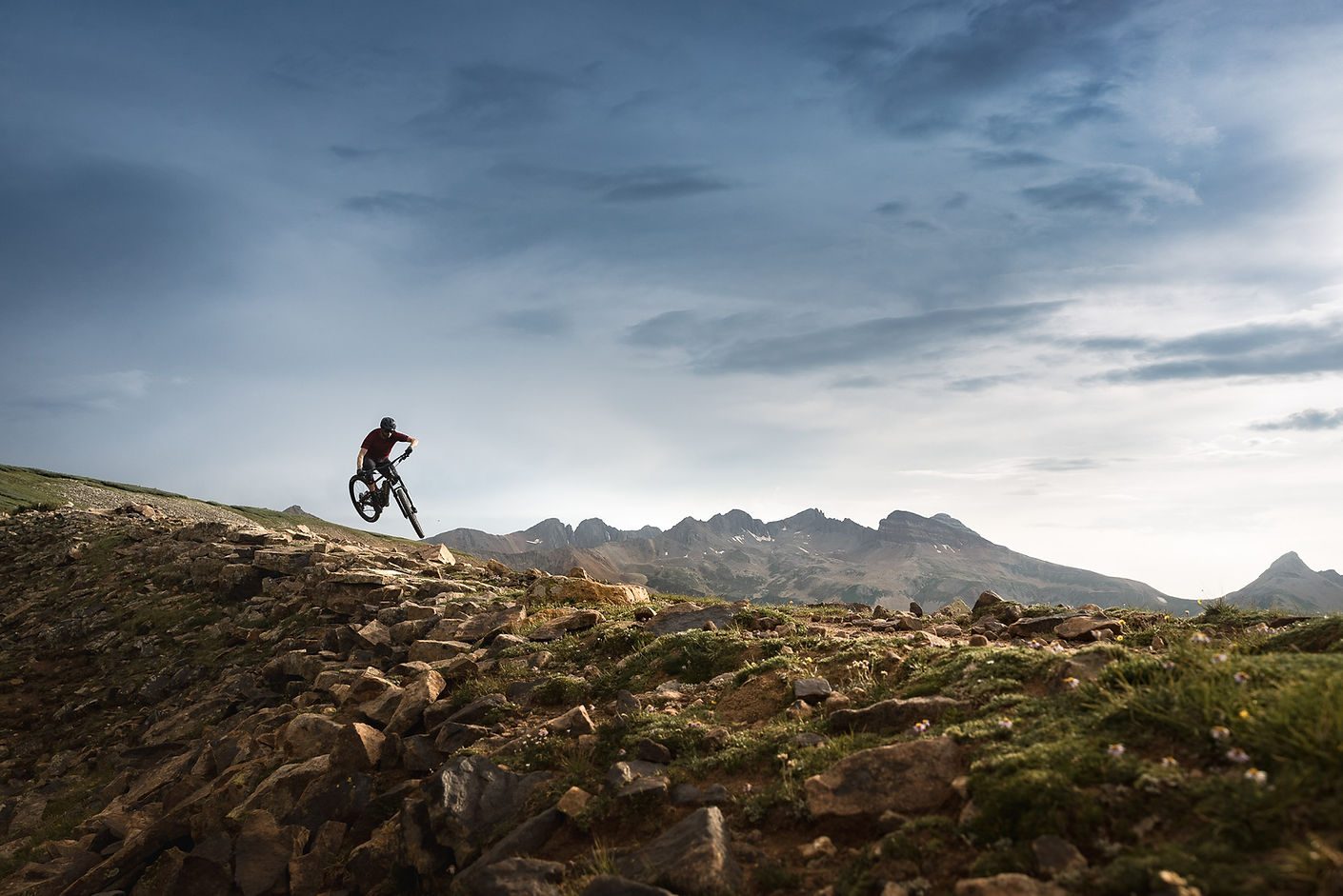
LOCK
Power to the pedals. In Lock position, the suspension is at its firmest setting to maximize your effort as you put the power down on those long grinds.
FLIGHT ATTENDANT MANUAL MODE
On those rare occasions when you need to opt out of Flight Attendant’s Auto Mode, the control’s there if you need it. Disable Auto Mode and cycle between suspension positions on demand. Manual Mode can be accessed through either the Flight Attendant Control Module, or on-the-fly with a click of the assigned paddle on the RockShox AXS Left hand 2-Button Controller.
FLIGHT ATTENDANT OVERRIDE MODE
A shortcut to your desired suspension position. Press and hold the assigned paddle on your AXS controller, Override Mode turns off Auto Mode and shifts the system into your designated Override position: Open, Pedal or Lock. After that all-out sprint, or when ready, click the same paddle again to re-engage Auto Mode, and never miss a beat.
GET HOME SAFE
Built in peace of mind. If a system problem arises, like a critically low battery, Safe Mode automatically places the suspension system into the Open position so you can get home safe to recharge.
FLIGHT ATTENDANT BIAS ADJUST
Bias Adjust give you the power to fine tune how Flight Attendant reacts in Auto Mode to your personal ride style and preference. From the factory, the system is set right in the middle: Zero Bias, for an effective balance of all three suspension positions. Based on personal ride style, adjusting Bias instructs the Flight Attendant system to favor the Open or Lock suspension positions.
When you Bias the system towards Lock (+1 or +2) Flight Attendant maximizes rider efficiency and the return on every pedal stroke with the system favoring the firmer Lock position, as often as possible. When you Bias the system towards Open (-1 or -2) the system will favor the Open position more often, with less likelihood of Lock.
There’s no right or wrong, Bias Adjust is all about choice and fine tuning the feel of the system to better match your style. Adjust your Bias at any time through the Flight Attendant Control Module or a simple tap on the AXS mobile app.
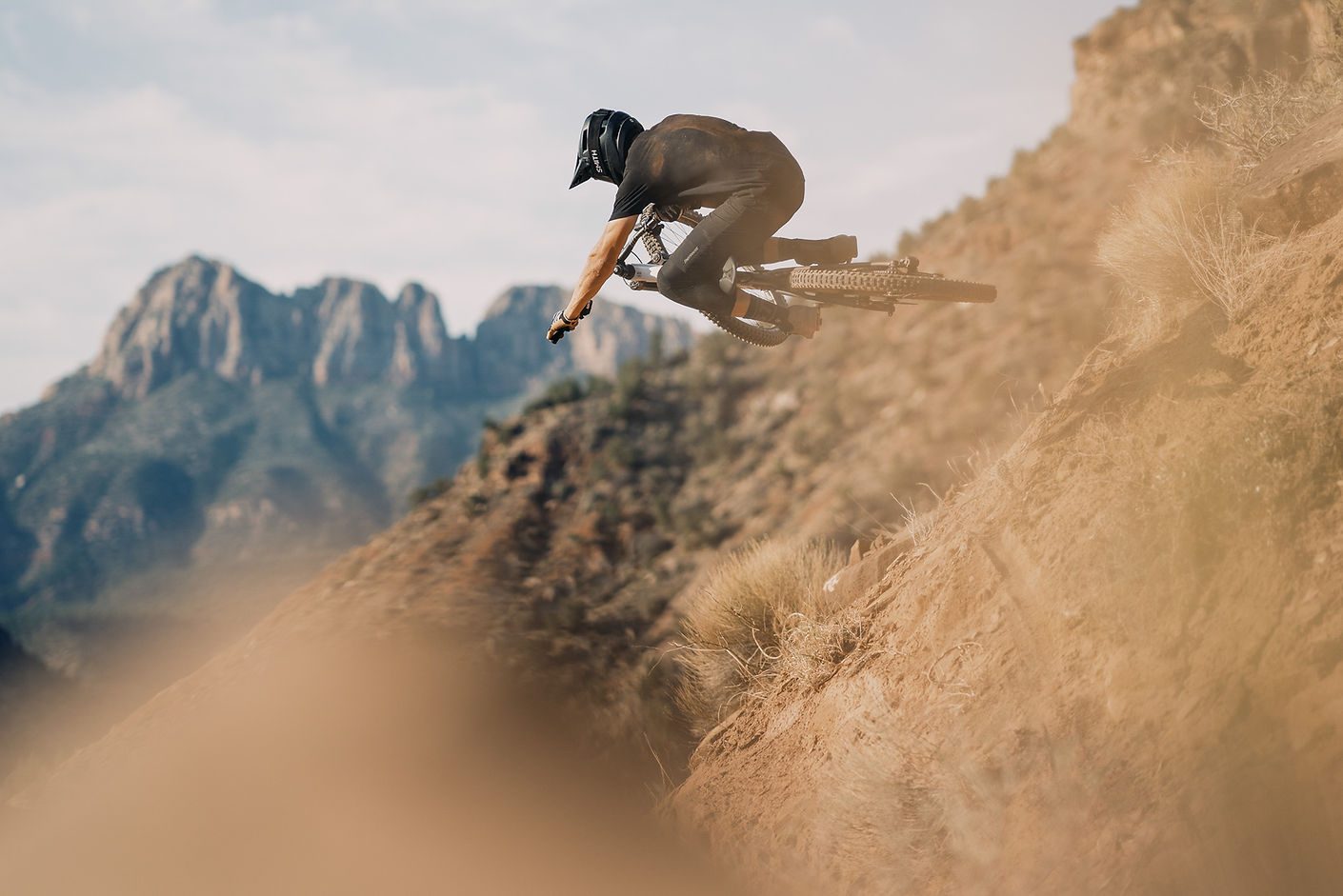
FLIGHT ATTENDANT LOW SPEED COMPRESSION ADJUST
Dial in your ideal performance and feel on the fork and shock with 10 Low Speed Compression settings. Tunable at any point through the Flight Attendant Control Module or via the SRAM AXS App.
THE APP AT THE CENTER OF IT ALL
AXS-enabled and completely customizable. Flight Attendant is an integrated part of the AXS ecosystem. Use the SRAM AXS App to adjust settings for your entire AXS system, Flight Attendant included. Build a bike profile, customize your controls, check battery charge status, and update firmware as needed right from your phone.
GET RIGHT TO THE RIDE: INITIAL SET UP
Out of the box or fresh from your favorite retailer, set up is simple. Pair your AXS components, set up your front and rear suspension, calibrate the Flight Attendant system, and you’re done! Flight Attendant remembers everything. Next time, get right to the ride.
FLIGHT ATTENDANT CONTROL MODULE
This is the central hub. Flight Attendant’s Control Module lives aboard your fork, collecting data from sensors, analyzing trail and rider inputs, and orchestrating your Flight Attendant components. Located within reach, the Control Module makes it easy to adjust and fine-tune on the fly.
PIKE ULTIMATE FLIGHT ATTENDANT
Pike Ultimate was built for the all-day epic. Now featuring Flight Attendant, we’ll see how far that truly goes. Pike Ultimate Flight Attendant has a new look with an ultra-light build, optimized travel to stiffness ratio and plenty of drool worthy new features. Designed for trail riders not looking to compromise on features or performance.
LYRIK ULTIMATE FLIGHT ATTENDANT
Lyrik Ultimate Flight Attendant sets a new standard for power and efficiency in an all-mountain fork. Featuring a hyper-focused new chassis that’s lighter while still critically stiff for Lyrik’s legendary performance and versatility.
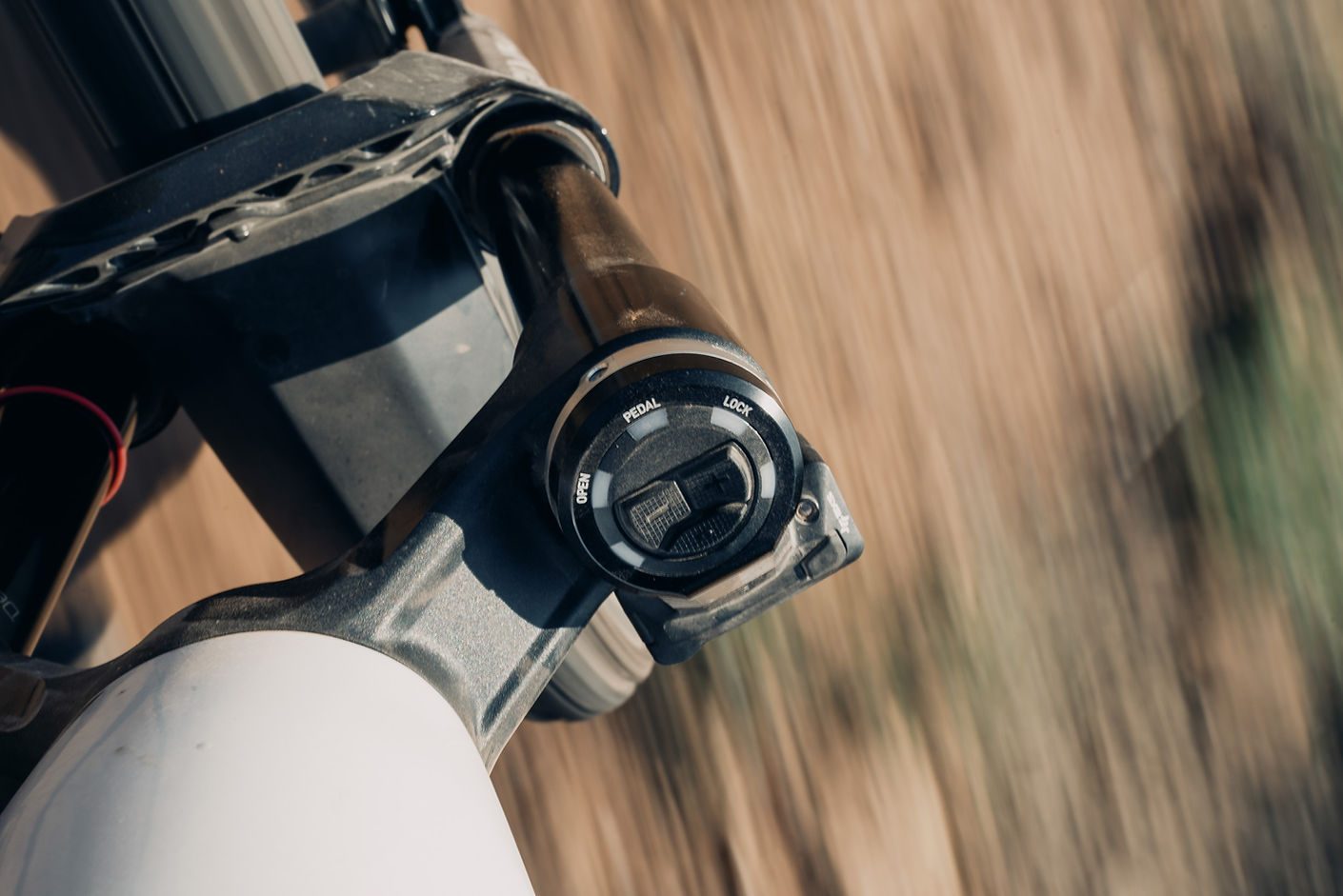
ZEB ULTIMATE FLIGHT ATTENDANT
With Flight Attendant, ZEB Ultimate redefines how far you can go on an enduro bike. Long on travel, short on excuses, ZEB Ultimate Flight Attendant has an updated chassis with more features than ever before.
INTRODUCING BUTTERCUPS
Low amplitude, vibration reducing material pucks... but we like to call them ButterCups. ButterCups block 20% of unwanted “trail chatter” before it reaches your hands. The gold housings on the end of the damper and air spring hold two rubber pucks that absorb the high frequency vibrations before they travel through the fork and into the handlebar. ButterCups reduce overall hand and arm fatigue and will leave you feeling fresh with more control over the trail.
FEATURED IN:
Pike Ultimate Flight Attendant
Lyrik Ultimate Flight Attendant
ZEB Ultimate Flight Attendant
INTRODUCING CHARGER FLIGHT ATTENDANT
Charger Flight Attendant electronic damper features an automatic 3-position compression adjustment (Open/Pedal/Lock) with 10 clicks of independent adjustable Low Speed Compression and 20 clicks of adjustable rebound.
FEATURED IN: Pike Ultimate Flight Attendant
Lyrik Ultimate Flight Attendant
ZEB Ultimate Flight Attendant
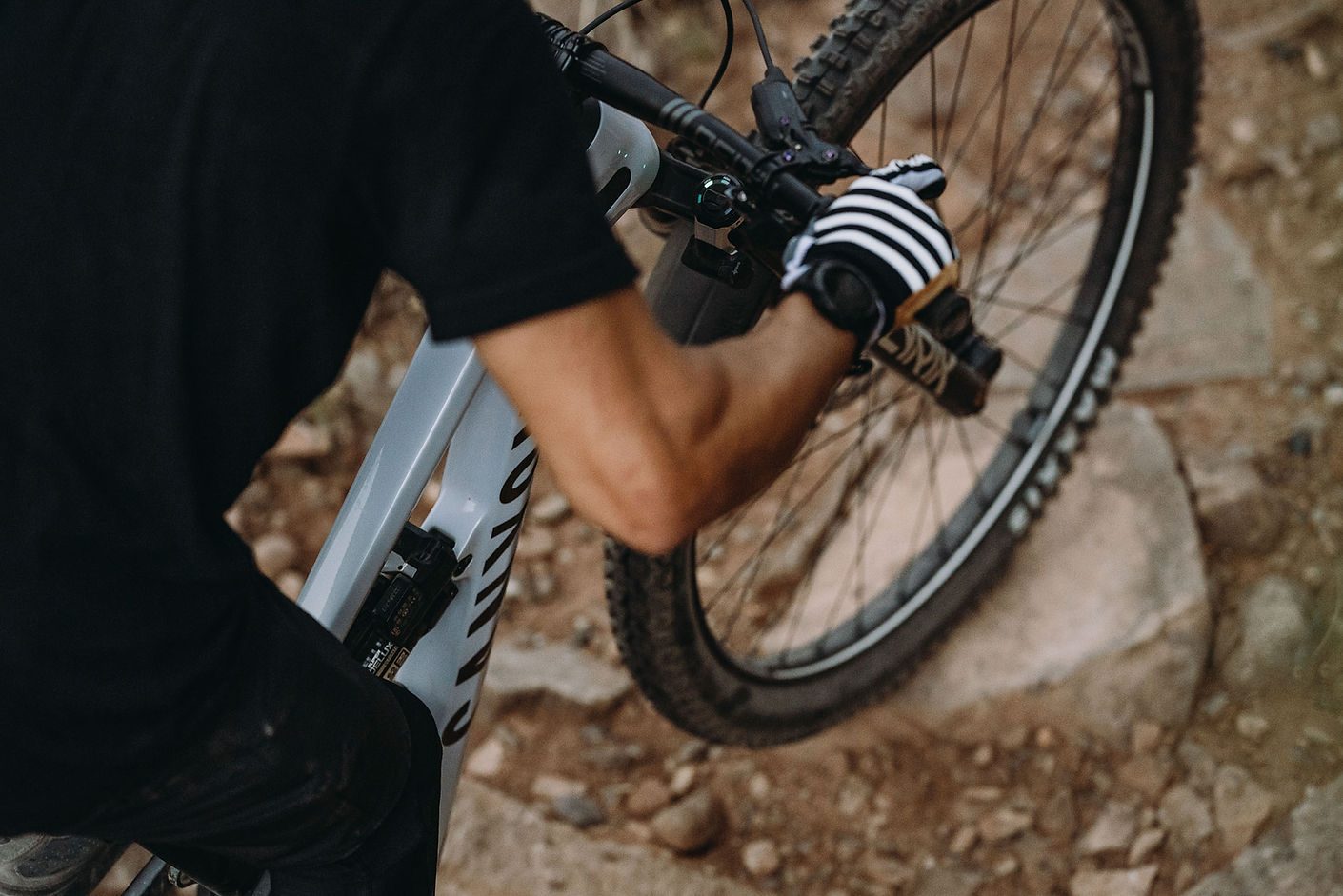
INTRODUCING DEBONAIR+
DebonAir+ is built to strike the perfect balance of what riders really want: butter-like small bump feel, increased support throughout the travel, and higher overall ride height for more confidence when things get steep.
FEATURED IN: Pike Ultimate Flight Attendant
Lyrik Ultimate Flight Attendant
ZEB Ultimate Flight Attendant
INTRODUCING PRESSURE RELIEF VALVES
Pressure Relief Valves eliminate unwanted air pressure build up in the lower leg caused by variations in altitude or temperature. With the press of a button or two, Pressure Relief Valves restore the lower leg balance for optimum sensitivity and a premium fork feel.
FEATURED IN: Pike Ultimate Flight Attendant
Lyrik Ultimate Flight Attendant
ZEB Ultimate Flight Attendant
STIFFNESS REDUCERS
Using torque caps add an additional 5% torsional stiffness to our forks. But if you aren’t interested in “free stiffness” all Flight Attendant forks will now feature the option to run a standard hubcap via a new bolt-in adapter. Hubcap adapters are easy to install for those who choose to wave the free stiffness.
FLIGHT ATTENDANT REAR SHOCK MOTOR MODULE
Measuring and reading real-time terrain inputs, the rear shock plays an important role in delivering the ultimate Flight Attendant ride experience.
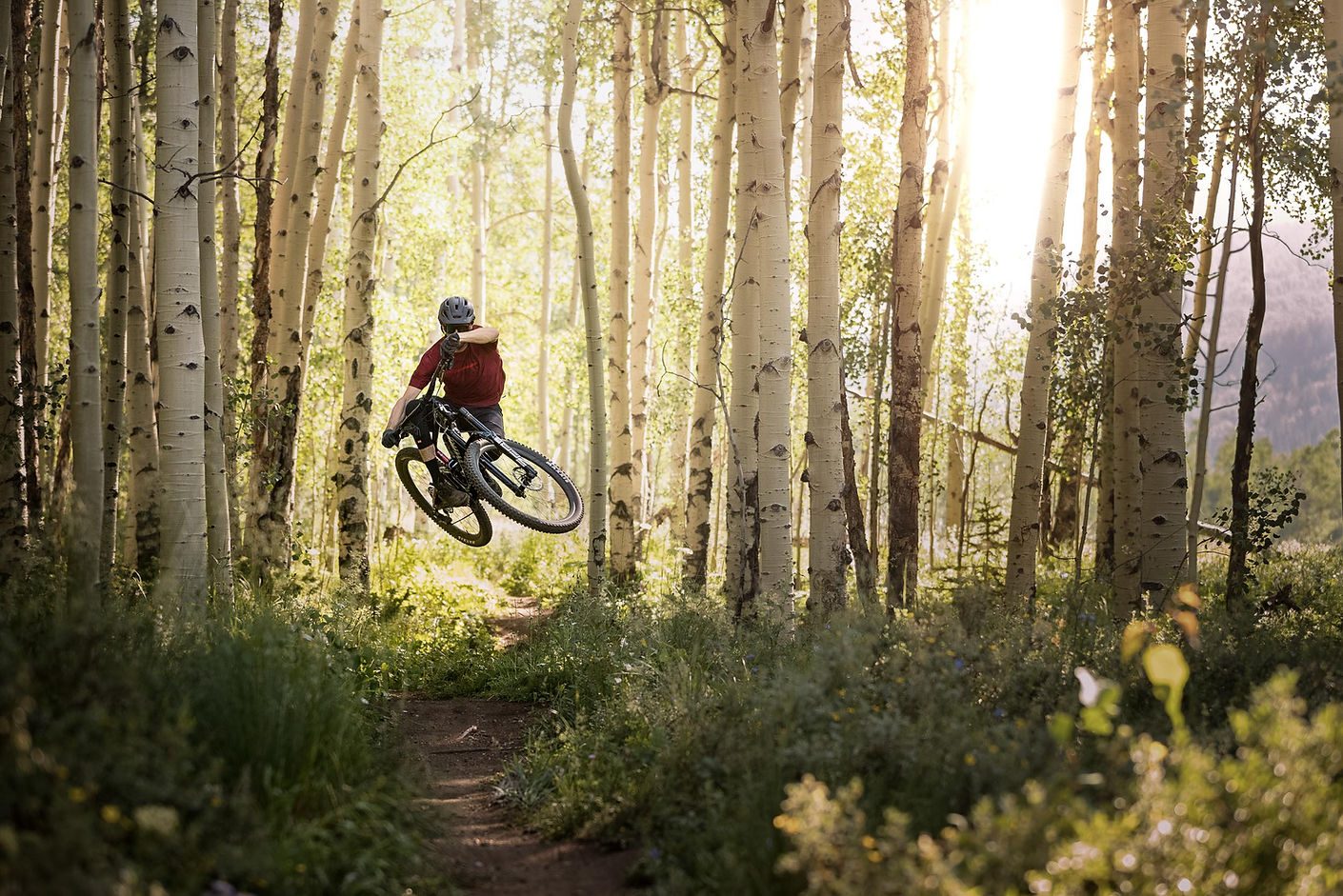
SUPER DELUXE ULTIMATE FLIGHT ATTENDANT
Super Deluxe Ultimate Flight Attendant is built to balance uphill prowess with proven downhill performance. The new electronic 3-position RCT3 Flight Attendant damper gives you as much control while pedaling as on those hard-charging, wild descents.
FLIGHT ATTENDANT PEDAL SENSOR
The crankset’s built-in pedal sensor receives real-time pedaling inputs, notifying your Control Module the moment you start (or stop) pedaling.
SRAM XX1 / X01 FLIGHT ATTENDANT CRANKSET
New XX1 and XO1 Eagle Flight Attendant carbon tuned crankset is our lightest, stiffest and strongest to date. Enabled by SRAM AXS and equipped with a small pedaling sensor to read real-time rider inputs, notifying the Flight Attendant control module the moment you move.
ROCKSHOX LEFT HAND 2 BUTTON AXS CONTROLLER
Access the power of AXS with only the tip of your thumb. The new RockShox Left hand 2 Button Controller now elevates your ride with the powerful new tech of Flight Attendant. Cycle through suspension positions, turn on Override Mode, and activate the RockShox Reverb AXS dropper post all with two buttons.
Review: Giro Xnetic Trail Gloves
A good glove is not always super easy to find. Yes, there’s a ton on the market but they’re all not the same and riders want different things. For me, like a lighter glove, I like to get feedback from the bar. But I do want protection and need em’ to be robust. Giro has developed the new Xnetic Trail glove from techniques they pioneered in their footwear. The end product is a seamless one-piece glove. Ok, so what is Xnetic anyway? It features a TPU skeletal system bonded to a knit material. It’s sock-like comfort which offers suppleness and breathability. It’s also DWR-treated which makes it repel water and they have reinforced rubber to enhance abrasion and durability. That’s a lot packed into a glove, aye?

I’ve been riding with these gloves for a few months now. Firstly, they fit super well. No bunching whatsoever with these! This is down to the 3-piece palm construction that allows movement without scrunch whilst maintaining the bar feel. Secondly, they’re uber comfy. Thanks to the stretchy, strapless cuff help bolster comfort further and keep wrist movement unrestricted, plus it means there’s no Velcro to snag jersey sleeves. Thirdly, you can use your phone with them. So, now you don’t have to ignore your work calls (which you may still want to) and can take a photo. Or do whatever else we use our phones for these days.
On the trail the Xnetic gloves offered good grip, I had control whilst still keeping bar feel. The gloves felt minimal and wrapped snugly around my palm. I’d move my hand and the gloves go with them – no fuss or bunching. On (too many) occasions when I did fall, they kept my hands protected. I’d rather keep my hands scuff-free and these gloves did a solid job of that. In the wet weather, they kept my hands dry as the weather shred off them. I’ve been running these for a few months and will be using them for many more months to come. So, they might cost you, but they really are well made, damn comfortable and minimal with good protection.
Distributed by Worralls / RRP: $74.95
Reviewed by Liam Friary
Story: Behind the Brand with James From earSHOTS
earSHOTS allow riders and runners to take their love of sound to extreme places. These unique headphones stay secure no matter what the environment demands – from back flips at the park to the steepest descent on the trail. Made for adventure and exploring, these headphones are the ultimate accessory for those who want less distraction whilst listening to music or podcasts while they do what they love. We wanted to find out more about the story behind the brand, so we fired off some questions to earSHOTS founder, James Bell-Booth, to get the inside scoop.
NZM: Hey James, can you tell us what your original inspiration was, for earSHOTS?
James: I was training for an adventure race called the T42, in New Zealand’s beautiful Tongariro National Park. While training, I got fed up with my earphones: they fell off, got dislodged, and constantly needed re-adjusting. This resulted in frustration and distraction. After trying every earphone on the market at the time, and not finding anything that could stay in and feel comfortable while still sounding good, I came up with the idea of a new earphone design that would use magnets to attach to the ears. A design that you would fix to your ear – and forget. That was seven years ago…
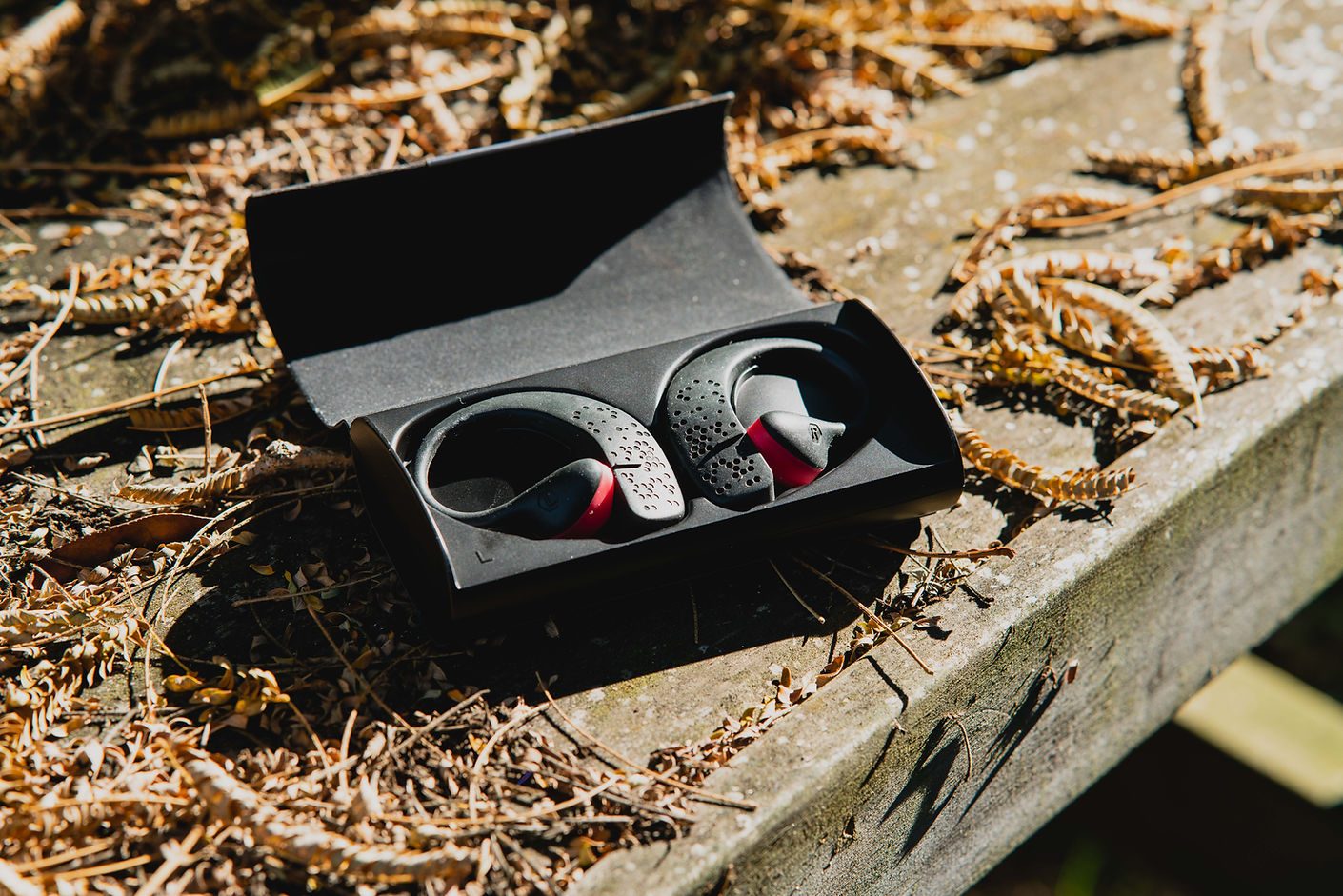
NZM: How long did you take to come up with the idea, design it and get it to market?
James: It wasn’t overnight, that's for sure! There’s been home re-mortgages, many late nights teaching myself how to hand-mould magnets, thousands of hours on the trails testing all aspects of earSHOTS – and that’s all before we went on the market in April 2020.
NZM: Who are earSHOTS designed for?
James: First and foremost, they’re for riders and runners who love music, but hate being distracted and annoyed by earphones falling out or requiring constant adjustment.
NZM: What is the best piece of advice you’ve ever received?
James: Just focus on putting one foot in front of the other – the results will look after themselves.
NZM: How long have you been riding and what sort of riding do you enjoy most?
James: I have been riding since I was about 16, with varying levels of intensity. I used to live at the foot of the Kahuterawa Valley. When Arapuke bike park wasn’t even a thing, we would ride up the road to the trails in the pine forest. On the way back down the valley we would stop at the swimming hole – the Bull Hole they called it – and cool off. It was epic. Unfortunately, they subdivided the land and now you can’t swim there. Classic bloody property-obsessed people ruining the old school Kiwi experience!
NZM: What’s the craziest or most backcountry place you’ve taken your earSHOTS to?
James: Where I have been is nothing on where I am seeing our customers take earSHOTS – including over the Southern Alps and even down to Antarctica.

NZM: Best playlist/podcast for listening to through your earSHOTS?
James: I love all types of stuff, depending what mood I am in. Our earSHOTS ‘blood, sweat & sound’ playlist on Spotify is definitely a go-to. Then for podcasts, I listen to everything from current affairs stuff, personal growth stuff and even a bit of philosophy. On my library right now you will find Downtime, the Mountain Bike Podcast, BBC - The Documentary, and the Robcast, which is a philosophy type vibe.
NZM: Finish this sentence: As soon as I’m out of lockdown, I’m going to…..
James: ....the beach. I find the ocean super therapeutic.
NZM: What’s next for the earSHOTS brand?
James: See my answer to question four! Touch wood, we have some really big hopes and dreams for earSHOTS. The big focus is making earSHOTS the best sound experience for riding and running in the world. We have been working on a few things and will look to share those with our community of customers and partners pretty soon.
NZM: Outside of running a successful company, and mountain biking, what can we find you doing most weekends?
James: It’s pretty hectic, I am not good at sitting still.... I take the kids riding; I recently purchased the ‘Kids Ride Shotgun’ seat for my three year old son, Ben, which he is stoked about. I try and get out for a surf as often as possible, which involves a two hour+ drive to anywhere decent. Then outside of that, chilling out with mates and family.... I have three kids, so they are always wanting to do something which keeps life pretty full on. I wouldn’t have it any other way, though.
Video: Love the Process - Max Langille
Love The Process, a tail of trusting yourself and what you’ll become. This film by Dylan Siggers gives a cinematic mix that’s meant to draw you into Max Langille’s process of completing a video part and dialing in tricks for competition.
Shift down, and enjoy a little peek into his process.
Story: A Nelson Underdog
Wairoa Gorge is, to many people, some of the best riding in New Zealand – perhaps even the world! And it has a story to match; one that has been told again and again, without growing old. One story that is yet to be told, however, is that of Nelson’s newest trail network out at Cable Bay Adventure Park.

The story, as well as the park itself, is a work in progress as the park has not yet officially opened (update as of time of publishing: Cable Bay is open for mountain biking!) as a mountain bike destination. It does see well over 150 daily visitors throughout the peak season though, who go quad biking up the many forestry roads, horse-trekking through the native bush, challenge themselves on an archery dragon hunt, shoot across the valley high above the canopy on the SkyWire, and enjoy the mouth-watering delights of the Base Café. Basically, it’s a pretty busy place.
As you’d expect, this hasn’t stopped the MTB community whatsoever.
It all began with Richard and Elina Ussher, a well-known adventure-racing couple - the epitome of fitness and adventure teamed up with fantastic personalities. A strong indication of evolution having peaked, as they also happen to be ridiculously good looking. Having travelled the world in pursuit of challenging adventure, Elina and Richard were both well accustomed to risk and dealing with uncertainty, yet their biggest adventure to date was to happen much closer to home when they took over Happy Valley Adventures and turned it into Cable Bay Adventure Park in December 2017.
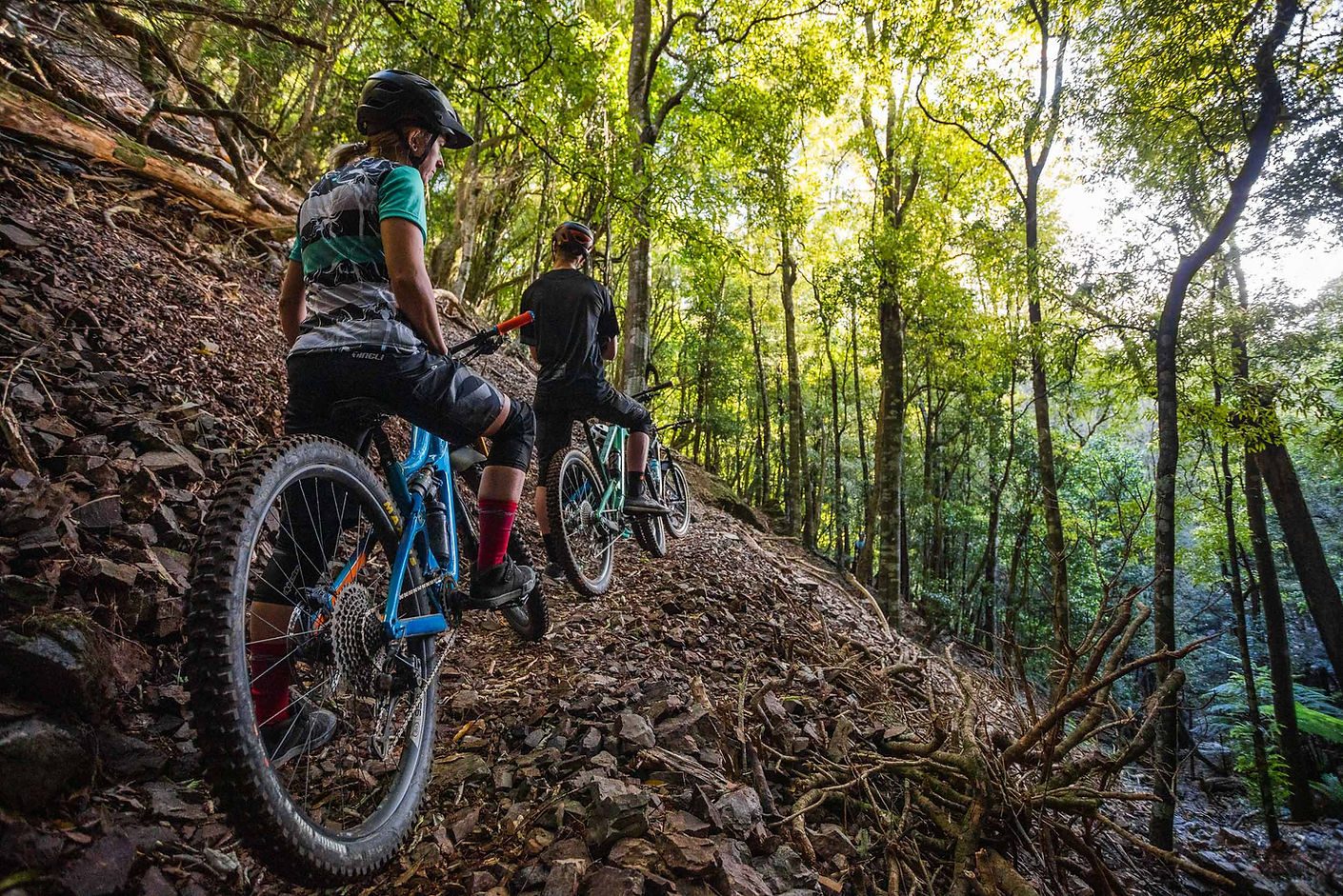
It wasn’t long before Richard, staying true to his adventure-racing background, had run up, down and across the 500 hectare property enough times to have a pretty good idea of where he wanted tracks built. After joining a couple of the local Super D races in Nelson, organised by Loui Harvey, Richard was keen to show Loui around. Now, for you guys who know the two of them, you can only imagine the sparks that flew that evening in the forest when Mr Enthusiastic met his equal in Mr Grand Plans. For you guys who don’t know them, imagine Chip and Dale - on steroids - if the two chipmunks were of completely different builds and backgrounds.
Trail building took off properly in October 2018, once Loui returned from a six-month overseas trip, racing the EWS. After a month of weekly night-digs, there was a group of 10 or so members who were to make up the core group of the operation. These guys didn’t only show up during the lovely summer nights with never-ending light, but also throughout the dark, wet and cold winter months, to get the job done.
Richard describes the decision to buy the park as a “calculated gamble”, so the first ever single trail out at the park was named, and is now affectionately known as ‘The Gamble’. The team, despite their occasionally unfavourable working conditions, seem to all keep turning up – being generously fed and hydrated post-digging has certainly contributed to this kind of commitment and vibe; a vibe worth returning for. I’ve been there; I’ve heard them all tell the stories about the size of the rock they moved off the track - much like a great fishing story, the hands get further and further apart with each rendition. Eventually, winter turns into spring and then summer, one track turns into two and then five.

Fast forward to summer 2020 and, after a life-changing ride in the Polaris uphill and an eventful skidfest following Sven Martin, Sweden-based kiwi Steve (@stevesmurfy) Murphy claimed that The Gamble had landed in his top five tracks ever ridden. You guys who know Steve are probably aware he is easily excited when it comes to riding bikes down a hill, but you’ll also know he has ridden his bike on a lot of trails around the world so I will claim it for the purpose of this article. The face of Loui, who has managed the trail building efforts and, along with Richard, has marked out where most of the trails will go, lit up upon hearing this and replied: “You just wait ‘til you ride Jurassic!”
Climb aboard the Polaris to smoothly Segway up the steep, baby-head-littered forestry road to the same starting point as The Gamble, enjoy a second go at the log drop and the rocky chute - but for goodness sake do not pedal that short climb again! Instead hang left into a different world. It’s here you might find that, unless The Gamble converted you already, you become slightly religious…. OK, at the very least you’ll find it pretty cool. But, don’t go ahead and peak prematurely; I haven’t even started talking about the trail itself yet. The aptly named Jurassic is carved out amongst giant pungas, mighty natives, dramatic shapes and a multitude of dark green shades that will have you imagining that you’re riding alongside a shrieking T-rex with abnormally short arms. This could just be Loui, but you won’t know as you’ll be too busy managing your trail-froth. After negotiating unexpectedly well-built corners, rowdy rock turns, Chiliean anti-grip like dust, into off-camber anaconda roots for 600 metres of vertical descent, you won’t mind that gentle pedal out along the creek to get all your ducks back in a row.
Next up, the Cable Bay DH track. Starting with a no-fuss firebreak, straight-line into the pines before you hit the road gap that drops you into one of the few sections of natives, after which you’re on your own in the open with nowhere to hide. By getting increasingly steep, the trail will ensure you stay on your game. A 10 minute, on-demand shuttle will have you back at the top so you can do it all again.

If, however, these grade 4-5 trails do not appeal to you in any way, you might be more interested in the fact that the shortest pedal takes you to Formula 1; a wide, flowy, digger-built grade 3 that lends itself nicely to smashing out a few laps. Whilst talking about laps – one of the many grand plans for Cable Bay, is a trail following the perimeter of the park creating a nice, long (not to mention, scenic) loop to ensure there is something for everyone.
Having been created by – and for – the community, Cable Bay Adventure Park has already landed firmly in the hearts of locals and, through its easy access, is now gaining traction both nationally and internationally. What can I say? Everyone loves an underdog!
Words: Jess Enlund
Images: Sven Martin & Henry Jaine
Review: 100% Altec Helmet
Helmets sit at the very top of the ‘protection pedestal’ when it comes to mountain biking. Whilst it makes choosing a helmet a little overwhelming, I’m stoked to see so many different companies pushing them out. Helmets, and protective gear, are among the only product groups in mountain biking that I can get behind when it comes to companies pushing out gear quickly - ultimately, the safer we are the further we can push, and the less likely we are to develop injuries and conditions (such as CTE) further down the line.
It seems like only yesterday that 100%, a company with roots in motocross, started pushing into our sport. They’ve for sure made their mark - and the Altec is their first foray into open-face mountain bike helmets. It features 15 vents and, whilst this number isn’t even close to industry leading, the vents are all HUGE. It also features 100%’s Smartshock Suspended Rotational System, which is essentially their answer to MIPS. The Smartshock System is designed to absorb rotational impacts by compressing and allowing the helmet liner to move independently to the helmet’s shell. The independent movement reduces force on your brain, lowering the chances of brain injury in a crash. A network of shock absorbers throughout the helmet basically mean that unlike the traditional MIPS netting you may be used to on some older MIPS helmets, the Smartshock System doesn’t look all-too-different to a set of standard, pre-MIPS helmet padding – remember those days?
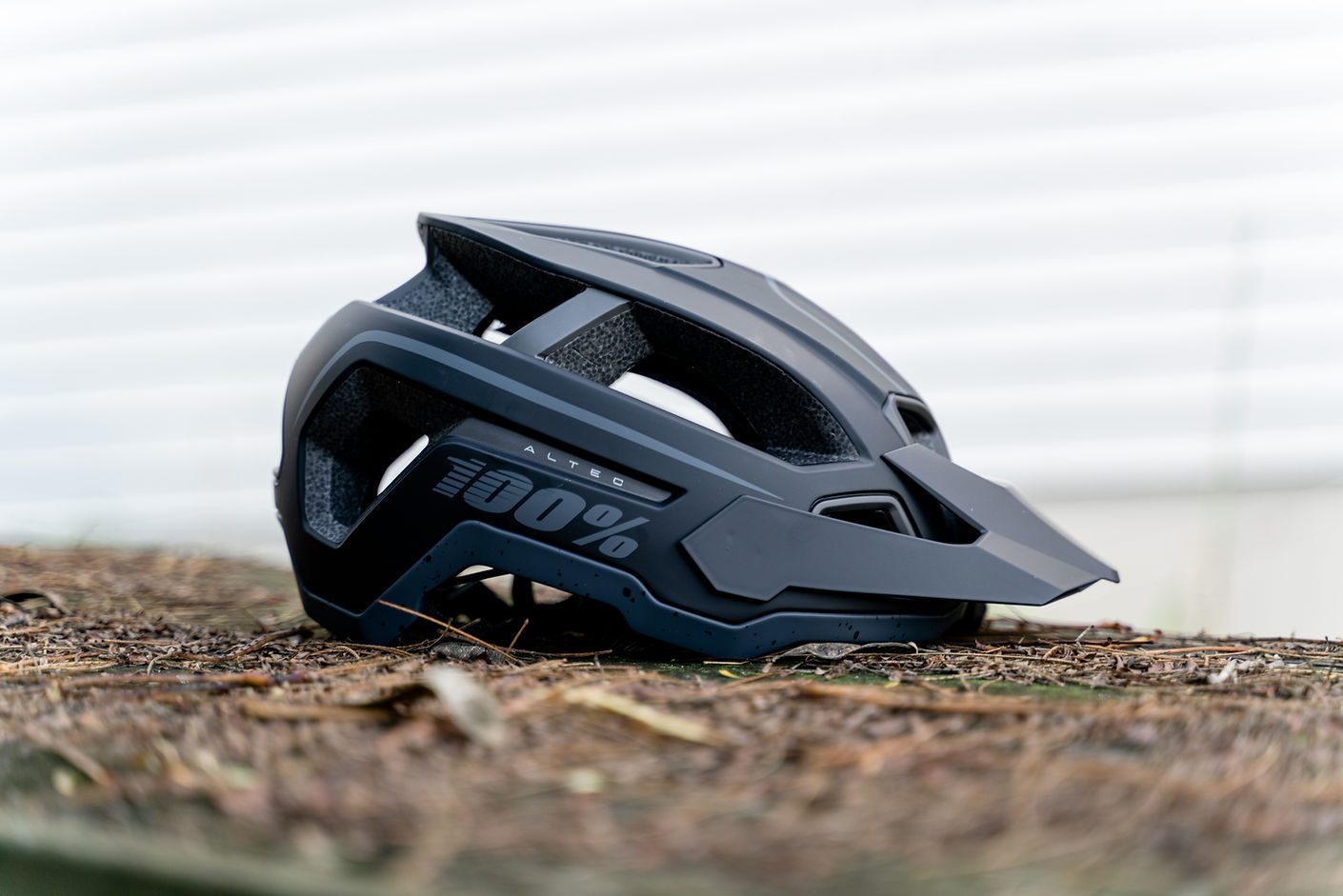
I’ll start off by saying that the Altec is comfy. Not necessarily ‘write-home-about’ comfy, but it sits firmly middle of the road. The first time I tried it on, I felt a little pressure right at my temples, but after noticing that there are two mounting points for the harness, I moved it to the backmost option and found the pressure was gone. I’m a couple of months into my time with the Altec now, and have found that when I first put it on there’s a tiny amount of pressure right by the adjustment dial on the back of my head, but once I’m moving I completely forget about it. It’s worth noting that I didn’t find any info on the different mounting points for the adjustment harness, but if you pull back the foam you’ll find you have two mounting points right above your ears, and two where the adjustment dial attaches to the helmet. I’ve heard a little feedback about how some people have found the Altec doesn’t fit ‘quite right’, so if you’re trying one in-store and it doesn’t feel ‘quite right’, have a play around with the mounting options. In terms of coverage, it does a decent job. It doesn’t sit cross-country helmet high, but it doesn’t cover as far down the back of your head as some of the other trail helmets do. Less coverage also keeps the helmet lighter, and I found the combination of this and the lower weight actually felt really good around some of my local trails, where there’s not a ton of steep, rocky or rooty riding.
This helmet really shines on the ventilation front. As mentioned earlier; whilst 15 vents isn’t an impressive claim in itself, the amount of air these 15 vents let through is definitely worth mentioning. I’ve been testing this helmet over our transition from autumn to winter, and on one cold winter morning I actually rode back to the car to swap out the Altec for another helmet that doesn’t breathe as well. I can already tell the Altec will be my go-to summer helmet, given how well it breathes and the fact that the foam liner does a great job of keeping sweat off your face. The Altec also features three visor positions, so you can ramp it all the way up to stash your goggles underneath, then pull it back down once you’re ready to ride. I was actually pretty stoked on the fact the visor is stiff enough that it won’t move by itself, but not so stiff that it feels like you’re trying to rip the helmet off your head to adjust it.
All in all, would I recommend the Altec? Definitely. It’s lightweight, great ventilation means you almost forget you’re wearing it, and the Smartshock System adds that little extra peace of mind.
Distribuited by FE Sport / RRP: $299
Words: Cam Baker
Review: Santa Cruz Bullit
I had two reference points coming into this review: the first was the original 1998-2005 Santa Cruz Bicycles Bullit; the second was Lt Frank Bullitt’s tyre-peeling, torque-monster of a Mustang Fastback from the 1968 movie of the same name. The first reference point provided a lot of context for this new version of the Bullit, given the original bike developed a bit of a cult following in freeride circles back in the day. The second reference point provided some unexpected context for how the new version of the Bullit performed on the trails.
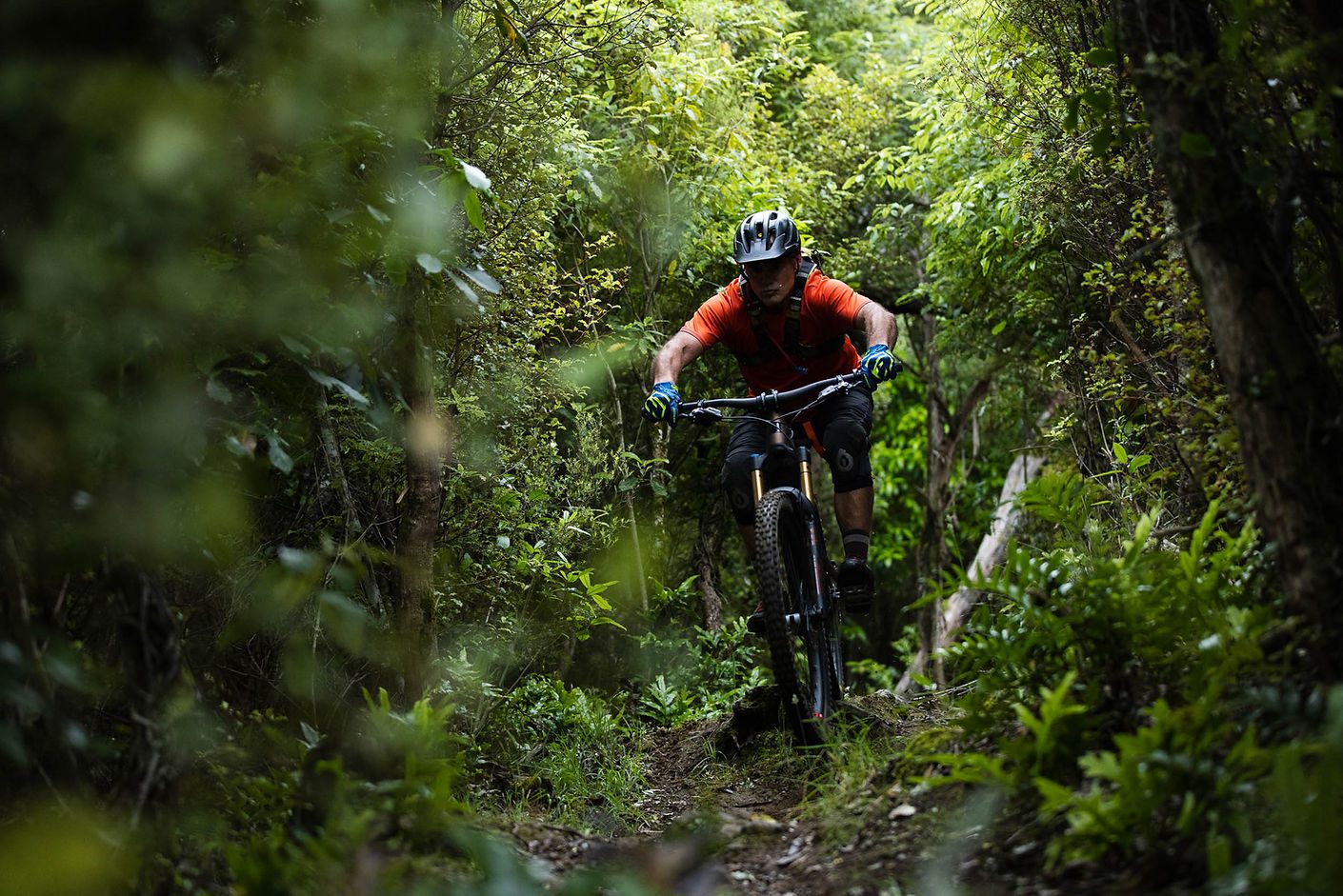
Hyperformance Hardware (the NZ Santa Cruz Bicycles agent) set up a media camp in Nelson when the first two Bullits landed in NZ, with a brief to throw them at Nelson’s biggest hills and toughest trails. Like any good bike review, the weather was also organised just as well as the media camp schedule was, so we got the full gamut during three days of sweet riding.
So, what have we got here? In Santa Cruz Bicycle’s own words; the new Bullit takes a ‘no limits approach’, is unapologetic and with a spec and build that ‘reflect the smashability of the platform’. It is also ‘a bike for riders who seek V10 level terrain that's out of range of any chairlift or shuttle road’. Bold claims. Have they been met?
Full disclosure #1 first: I realised pretty quickly that, subconsciously, I’ve been keeping myself at arm’s length from the pedal assist, mountain e-bike evolution that we are seeing in NZ and globally - for no good reason at all. I’ve already seen and experienced a rapid evolution in mountain bike design over my years of riding and racing. From what we were riding in the 90s, to what we are riding today, is nothing short of comparing a Model T to a Shelby Mustang. So why should jumping into the pedal assist e-bike space be any different? Well, my conclusion is - it shouldn’t be. What we are seeing is the natural, technology-based evolution of the mountain bike, giving nothing but good options for the trail rider. If you’re feeling a bit apologetic that you’re riding one, and maybe feeling like you have to make excuses for riding one, I reckon you should absolutely own it instead. We’re all part of the same space and having the same type of fun, so let’s just get over it and move on.
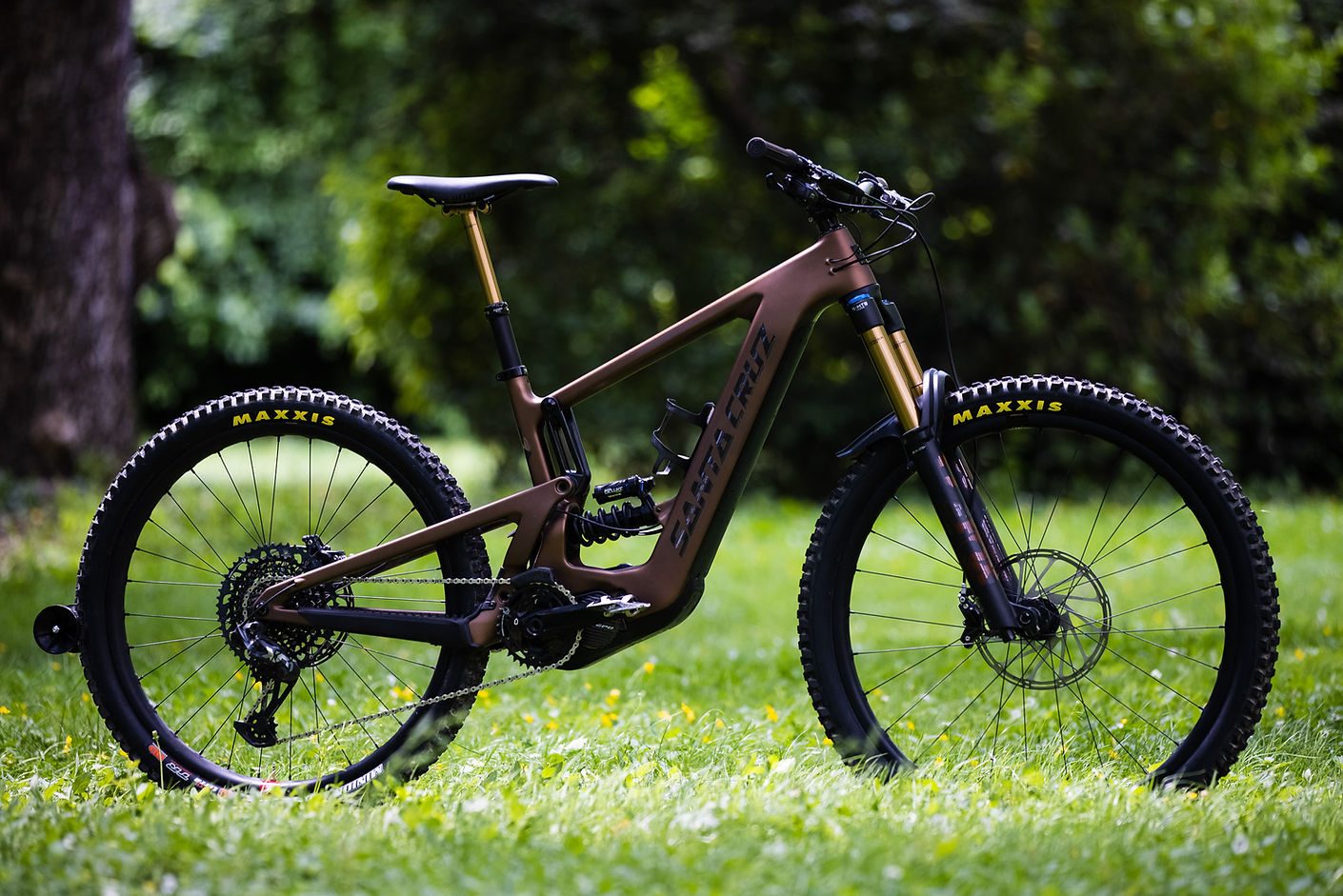
The Bullit is Santa Cruz Bicycle’s (SCB) second pedal assist e-bike. The first, the Heckler, also used a recycled model name - this is a clever approach from SCB, providing a level of continuity and connection with early models that we don’t normally see in the mountain bike industry. The Bullit embraces SCB’s MX platform (29” front, 27.5” rear), tried and proven in the World Cup downhill space with their V-10. MX is a very grown up way to describe this setup, with the informal ‘mullet’ usually the descriptor. Which brings me to full disclosure #2: I’ve been a mullet fan for several years now, and while the opportunity to rock one on my melon is long gone, the bike version absolutely fits with my riding style and the way I want a bike to perform. However, retrofitting a 27.5” or 29” bike to mullet configuration usually results in having to tolerate some level of geometry compromise, and that can be annoying. With my latest trail bike version, I have been able to get spot on with a fair bit of tweaking, so hopping on the Bullit for the first time felt immediately right and I was definitely in my happy place.
SCB have built the geometry of the Bullit around this MX style configuration, and that really is the only way to get the full roll-over, stability and increased traction benefits of the 29” front wheel, together with the cornering performance and flickability of the 27.5” rear wheel. The parts spec on the XO1 Coil build that I rode, was spot-on. Every component has been spec’d to support the desired use of the bike, and not a single component should need to be swapped out before throwing this bike at the trails. There will always be personal preference items that riders like to bring with them between bikes but, in this case, and even with my own little foibles in mind, there wasn’t anything I changed - or even remotely needed to change - before getting rowdy on this bronze machine.
The drive unit is Shimano’s latest EP8 motor with 630wh battery. This review alone could cover the full capability of this technology, but that’s not going to make for the sort of reading I suspect will fly. In summary though, this drive unit can be set to three modes – Eco, Trail and Boost – which are exactly as they look. Together with Shimano’s E-Tube phone app, using Bluetooth connection, each of those three power levels can be custom tuned around Assist Characteristics (eco through to powerful); Max Torque (20-85Nm) and Assist Start (mild through to quick). The permutations are endless, and setting the app up and changing any of those parameters is, thankfully, completely intuitive. Two full profiles can be setup as well, so it is simple to have something like a more flowing, full power/torque trail riding profile and a more gentle beech forest/technical riding profile stored- or even a dry roots and wet roots profile ready to go. This capability to custom tune settings is sure to provide endless fun for EP8 Bullit owners, and equates to a valuable trail-side tool giving the ability to tune the drive characteristics to the conditions. SCB went with Shimano drive units for the Heckler, and now the Bullit, due to the high level of international support, the natural/instinctive way they work, and their proven reliability. There is very little adaption time for the rider when hopping on one of these for the first time.
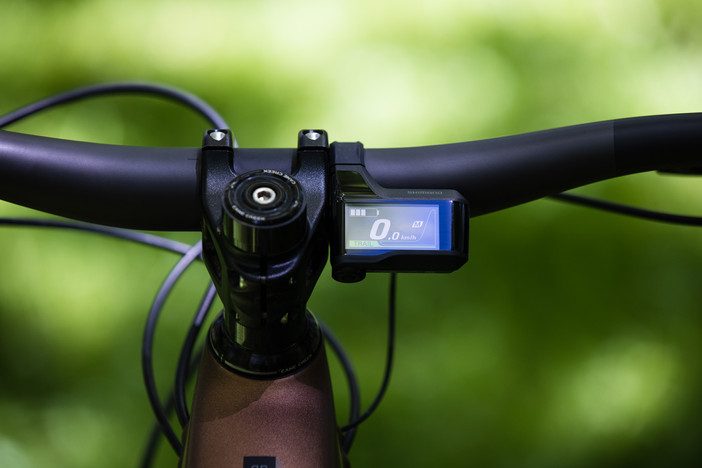
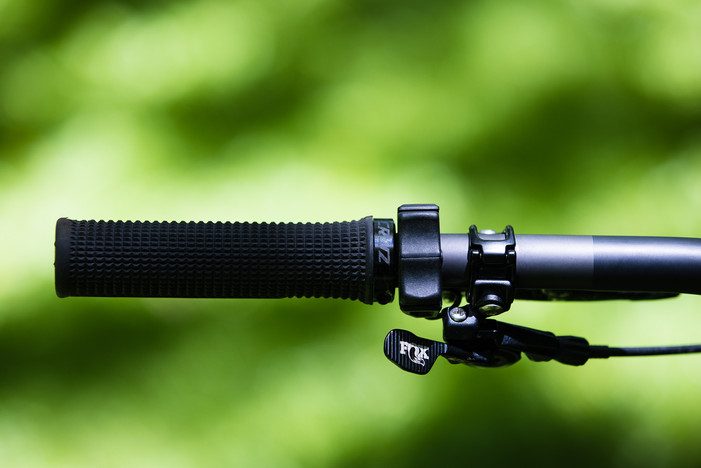
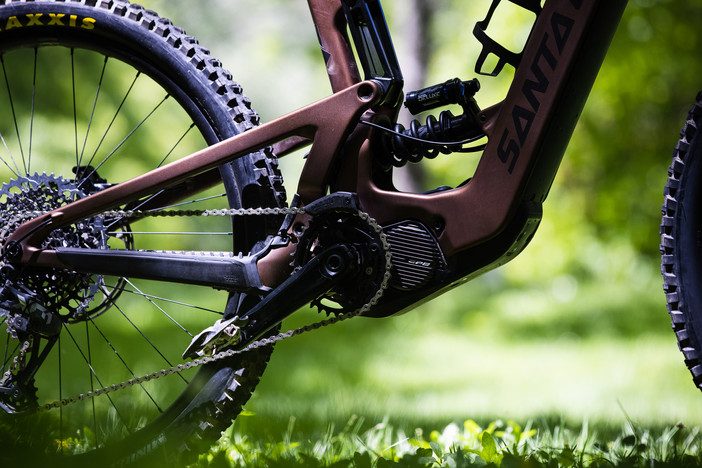
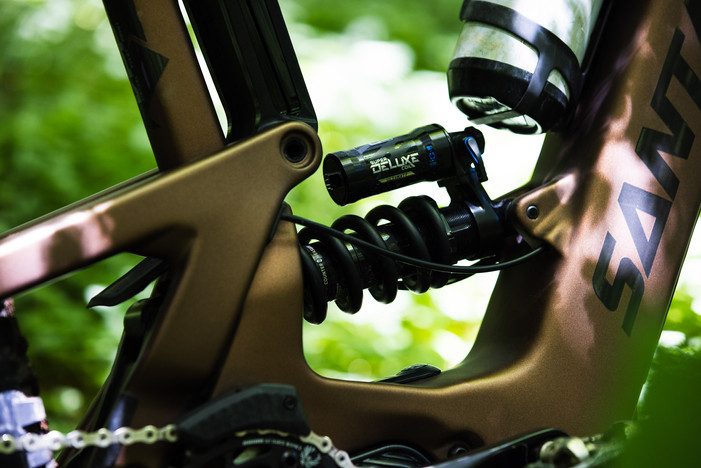


Our first day of riding was a bit of a shake down. Trails were reasonably dry and we hit some progressively harder trails as the afternoon wore on, including sessioning nasty, technical climbing sections that on a normal bike wouldn’t even be considered. My initial introduction and natural acceptance of the EP8 setup happened so quickly I was caught by surprise. Once I found the sweet spot around cadence, I was all over it. And that was a theme that ran through the media camp, regardless of what type of trail we were riding – when you’re working around that 80rpm cadence level, the world spins a bit slower. The first nasty, technical climbing section showed me that anticipation of gear selection, including using the single click shifter, needs to be slightly more advanced than on a non e-bike, to keep the motor working to deliver the right amount of torque and power through the drivetrain, to keep things surging forward. That learning again happened extremely quickly, and once sorted meant that ridiculously steep, rooty and slippery climbing sections of trail could be dealt with. It was relatively easy to get a feel for the torque assistance on these steep sections of trail too – constant pedalling pressure yielded great results, however, when climbing over steep, greasy root-infested sections of trail, some gentleness was needed to manage the torque. If front-back weight distribution was not quite right, even for the briefest of moments, things moved pretty quickly into Bullitt Fastback territory, with only the blue smoke missing! This is where the tuning capability of the motor really comes into its own, and dialling down the Torque, and possibly the Assist Start functions, will tailor the motor’s performance to the trail conditions, and desired performance. The bike does require a more deliberate technique with front/back weighting when climbing the technical, steep stuff though, with the drive system torque and power meshed in to provide more go-forward. It’s exactly the same technique as used on a non e-bike, but on steroids – the more deliberate the technique, the better the bike climbs. You definitely can’t just be a passenger on this bike and simply rely on the drive system to deliver in that sort of climbing terrain.
Our second day of riding kicked in after five hours of the sort of heavy spring rain we have had a lot of in Nelson this year. Trail plans were changed a wee bit as a result, with more of a focus on the lower areas of Fringed Hill to explore what the bike would do across a wider range of trail type. Day three took us to exactly the type of terrain this bike is designed for: steep, long climbs; technical, rooty and rocky linking tracks; and steep, rooty grade five goodness.
For me, slamming the bars on the large size bike was the only structural change I made, and it put me straight into a familiar mode of riding that usually only comes with a triple clamp fork setup. The front end of the Bullit encouraged that approach, with the Fox 38’s proving to be ridiculously solid and composed under severe front-end weighting and aggression. Non-plus size Double Down Assegai (2.5 front) and DHR II (2.4 rear) tyres give an obvious signal of the intentions of the bike, and are a welcome, important and entirely appropriate part of the overall spec, absolutely supporting the aggressive intentions of the bike. These same tyres are specced on all the different models of Bullit (as is the same CC carbon frame and EP8 drive unit), so SCB aren’t scrimping in that department.
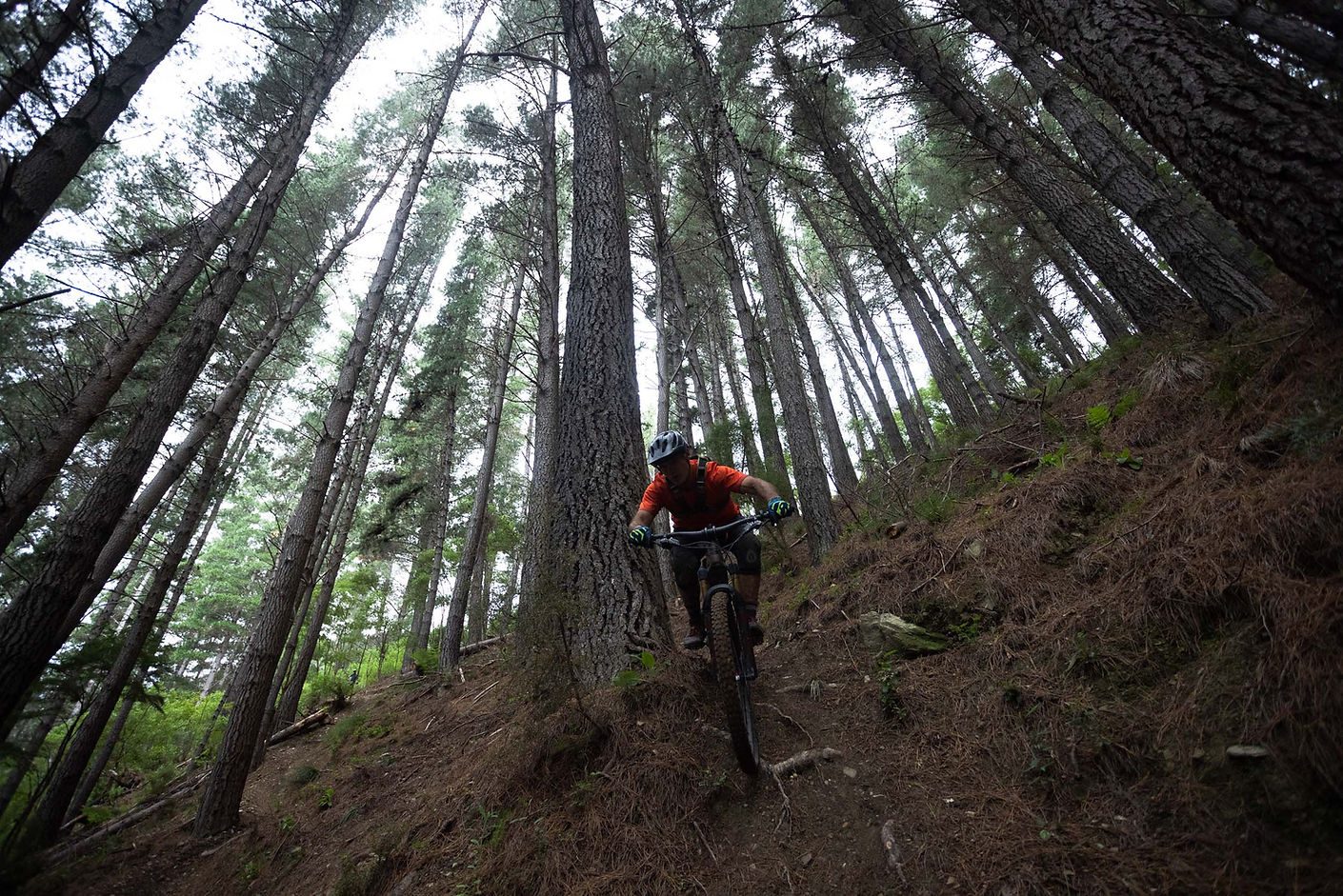
Carrying on the front-of-the-bike theme, two areas in particular stood out. How the bike took and held a line across off-camber, root infested trail sections was stunning – the combo of a fork with minimal lateral deflection, good damping performance and the super aggressive front tyre all working together to encourage line choice that would otherwise be off the table. Also, pushing the front of the bike through steep, deep holes and transitions was rock solid. No suggestion of the front of the bike ever getting hung up on even the nastiest of trail sections was a real confidence-inspiring characteristic. Big rotor Code brakes (220mm front, 200 rear) were right at home in that steep environment, with oodles of power modulation always on tap, and no fading to speak of at all – that says a lot about SCB’s approach to parts spec on these bikes.
Our wet day of riding showed two surprising traits with this bike that are well worth mentioning. The first is how receptive the bike is to hooking up on slippery surfaces when feeding constant weight through the middle of the bike – it was amazing. This trait alone yielded a lot of riding joy, and epitomised the ‘ride it like its dry’ mantra that is always the go-to for riding the slippery stuff. The weight of the bike and its low centre of mass sitting on those aggressive tyres worked in complete harmony to provide gobs of traction. The other trait that popped up in these conditions, that was a little unexpected, was how well the bike responded to being weighted and unweighted – natural trail pumping. The suspension platform provided plenty of support when getting aggressive in this area, and the bike responded in kind with making massive amounts of traction where needed, but also when getting its float on to glide over those sections of trail that required lightness. This was unexpected for me, as the weight of the bike had no real detrimental effects on this playful style of riding.
When the fickle Nelson weather took a break, it opened up a last minute opportunity to give the Bullit a run on some more open style, flowy type trails. Nelson’s classic ‘riding on marbles’ dry surface was the connection for this, and it showed some traits of the bike that might not have been fully evident in the technical style of riding we had been doing. Stability at speed was no problem at all, as was making traction where needed (see above), but the open stuff highlighted the need to get really aggressive with the body English to make this bike sing. A soft approach doesn’t gel with the Bullit – it begs you, as the pilot, to give it the firm prompts it requires to do its thing. The harder it is thrown, pushed and directed at the trail, the more the overall package responds.
Of course, a bit of jumping had to be factored in during our riding days - it would have been rude not to. E-mountain bike riders who like a bit of air time usually tell the same story when asked how their bikes perform in the air, and it was great to be able to confirm that on the Bullit. Not only does normal jumping technique apply, but the weight of the bike adds a ramped up level of stability when in the air. It sort of makes a lightweight trail bike feel just a wee bit sensitive! So jumping performance gets the big tick too. And – just a quick comment on the bike’s weight: SCB quote just under 23kg for the XO1 Coil we rode. That is a true weight, and considering the coil shock and downhill tyre spec, it reflects very favourably on the overall package. Compared to most other bikes in this category, it is definitely at the lighter end of the scale.
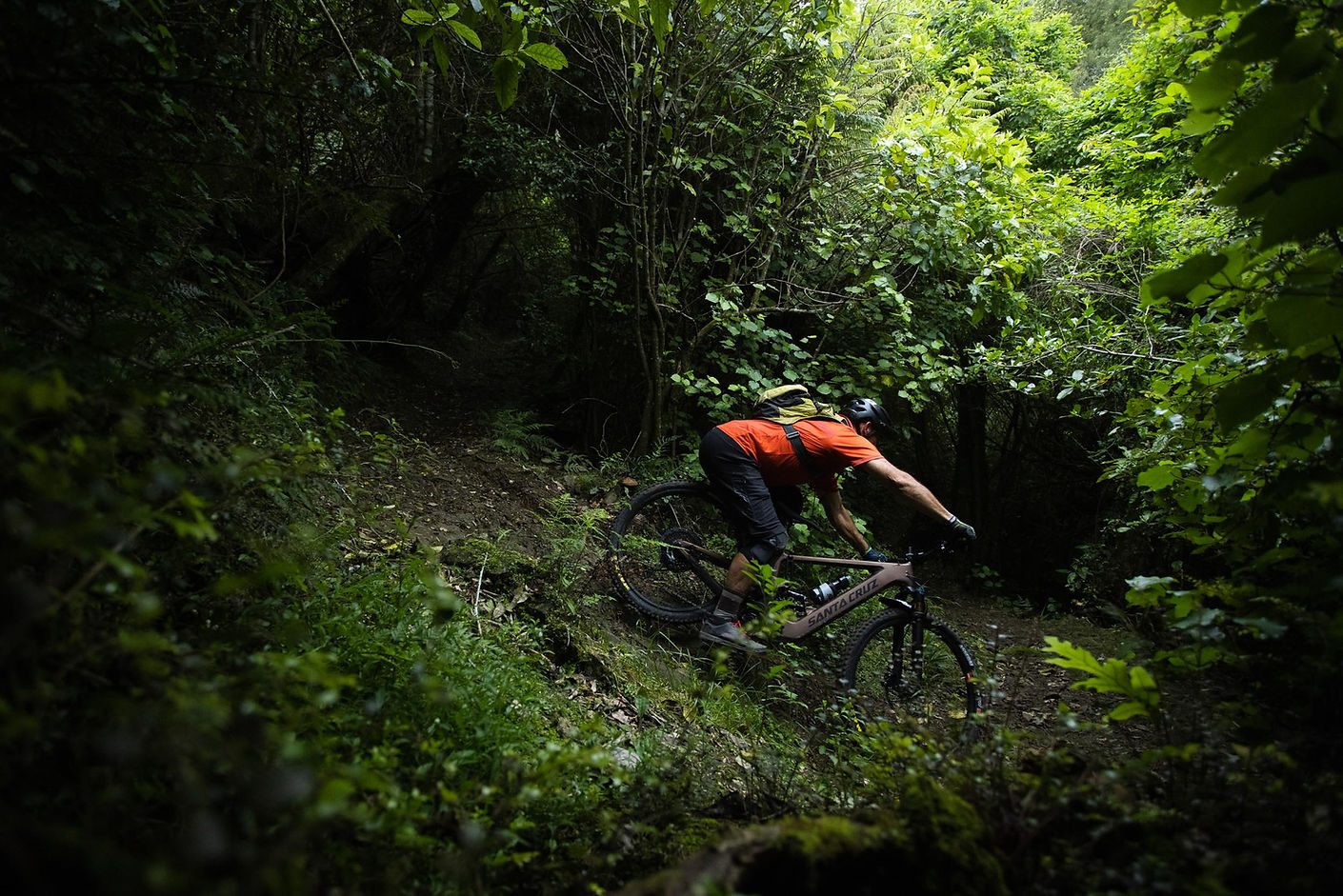
Without getting all tied up in watt hours, power settings etc, a five hour hard ride took us into one-bar-battery-remaining territory which, depending on power setting to get you home, was in the realm of about a 15km back-up range. That was after five hours of hard riding and climbing at pace. For my legs and lungs, the load we were climbing at was very close to my normal riding, but at three to four times the pace. That surprised me too, and I’ve come away from this review having dispelled any suspicion that pedal assist mountain bike riding might be too easy. Of course you can cruise, but using the drive system to its full capability becomes a new normal very quickly. I honestly didn’t realise just how quick we were climbing on these bikes until we came up behind non e-bikes.
I’d say Santa Cruz Bicycles have met their claims with the Bullit. They are bold claims, but so is this bike. Yes, it’s got some weight to it, but it didn’t take much time on the bike for that weight to be pretty much forgotten; the overall package just works so well. Yes, it’s a lot of coin too, but it’s also an awful lot of bike and probably represents the sharp edge of where this technology is at. The spirit of the original Bullit lives strong in this new model, and I reckon that the King of Cool, Steve McQueen, would have approved if this Bullit had been around in his time.
Distributed by Hyperformance
Words: Chris Mildon
Images: Henry Jaine



